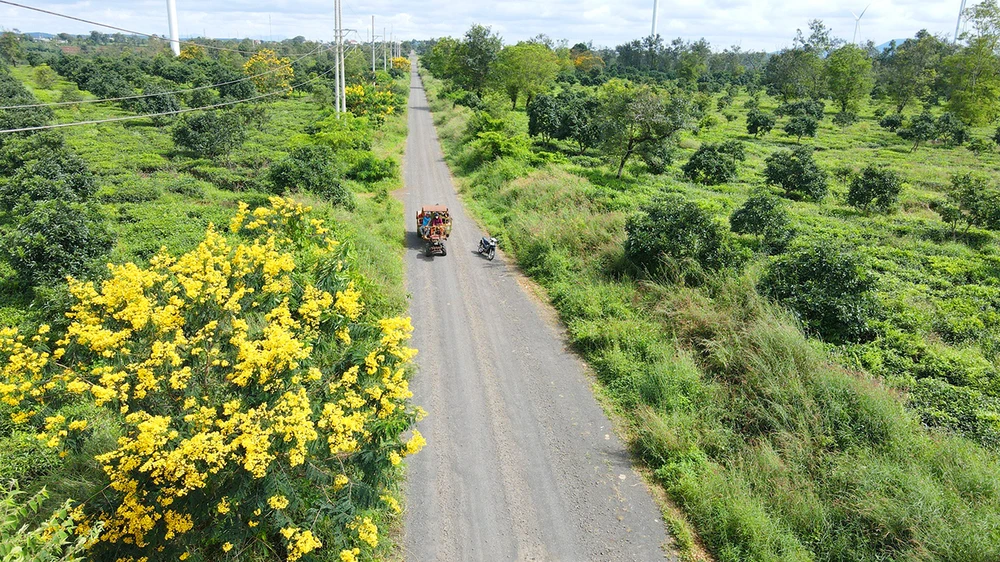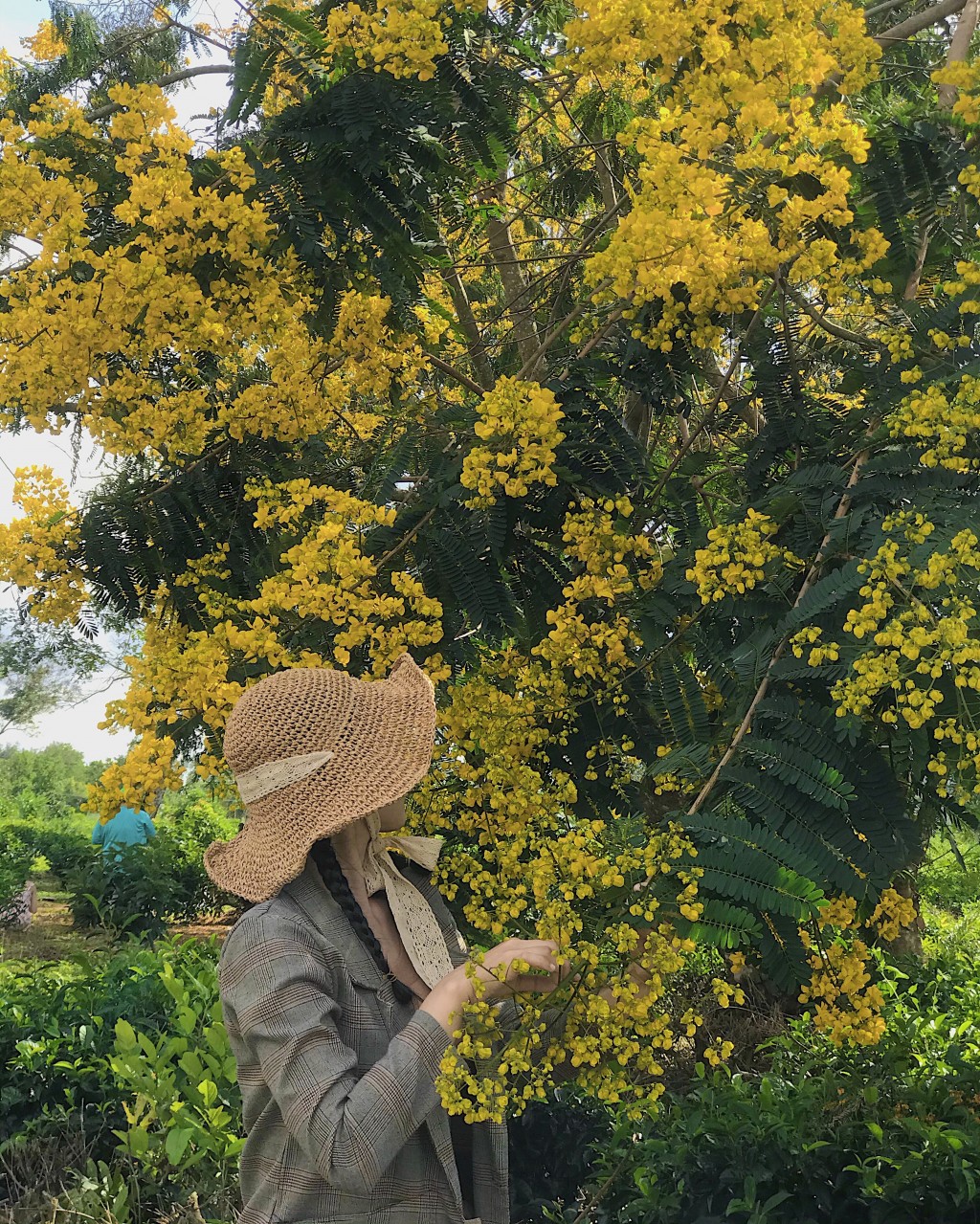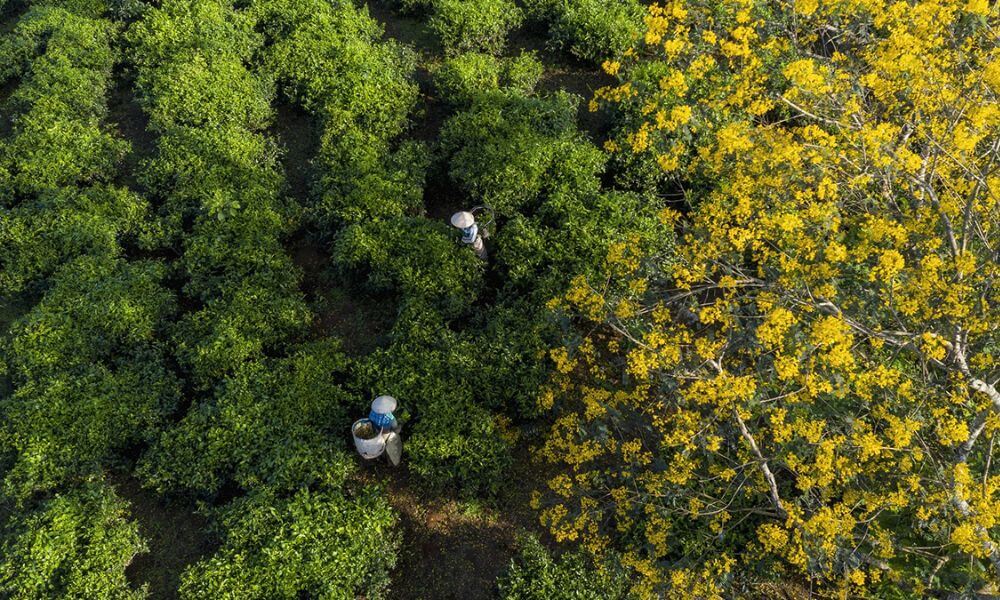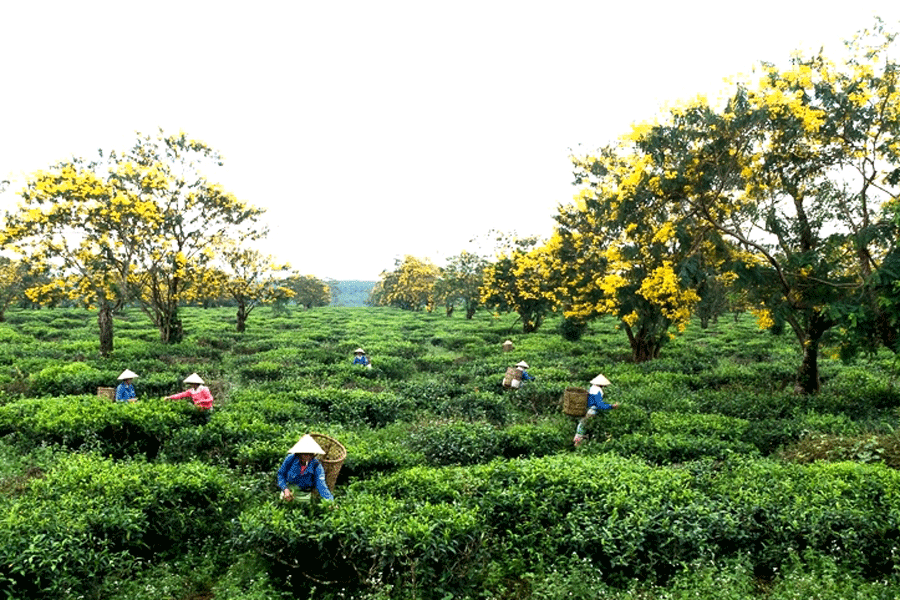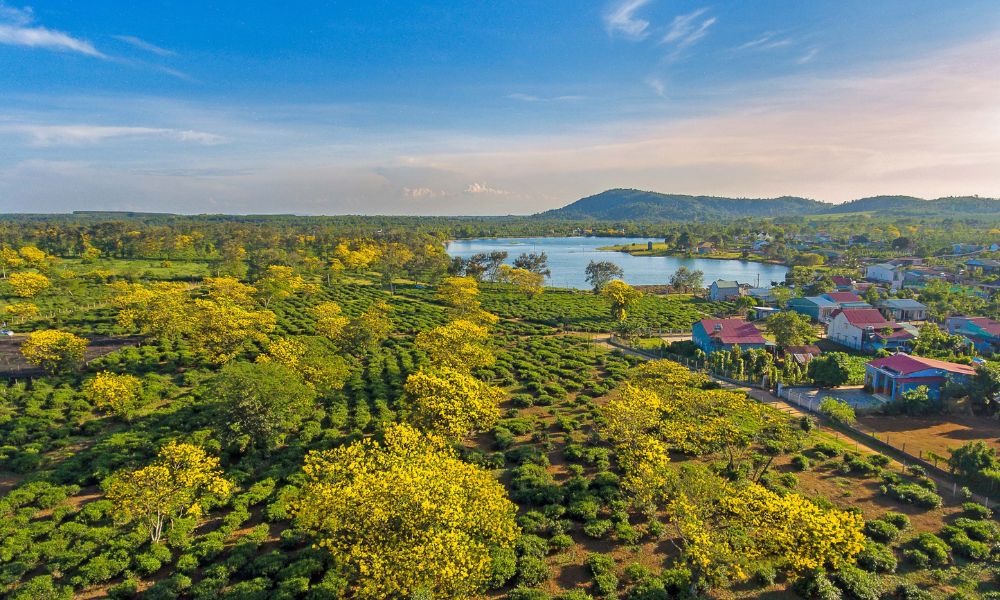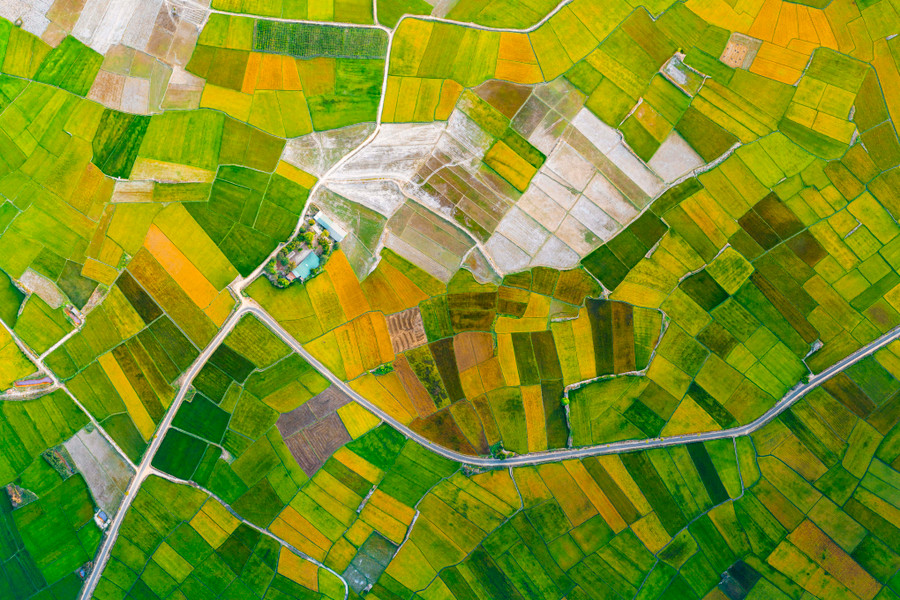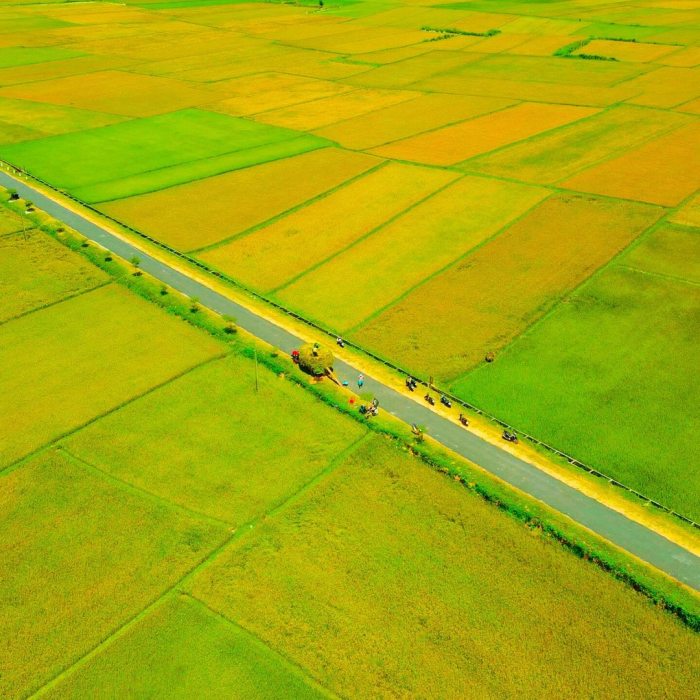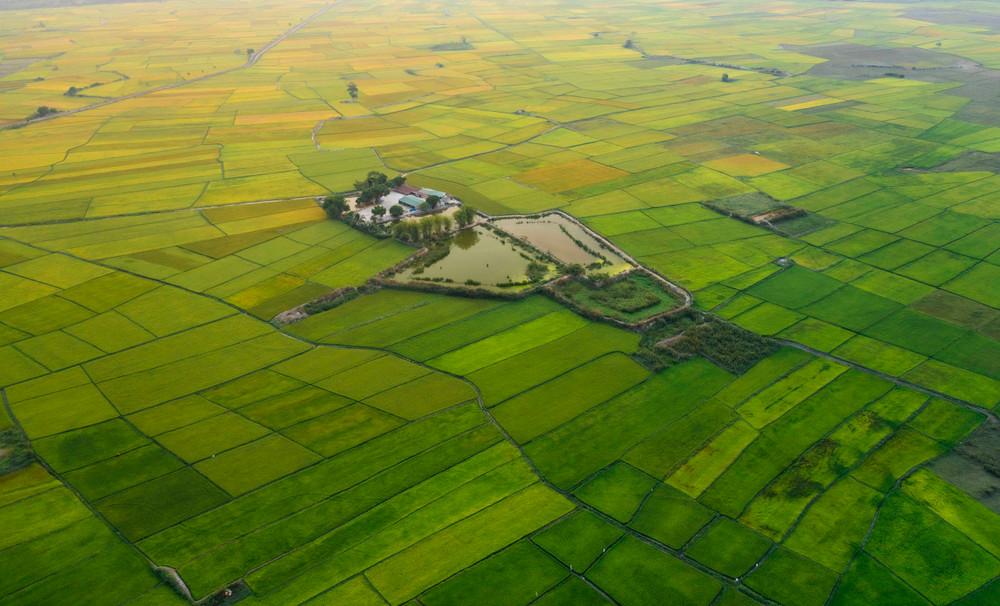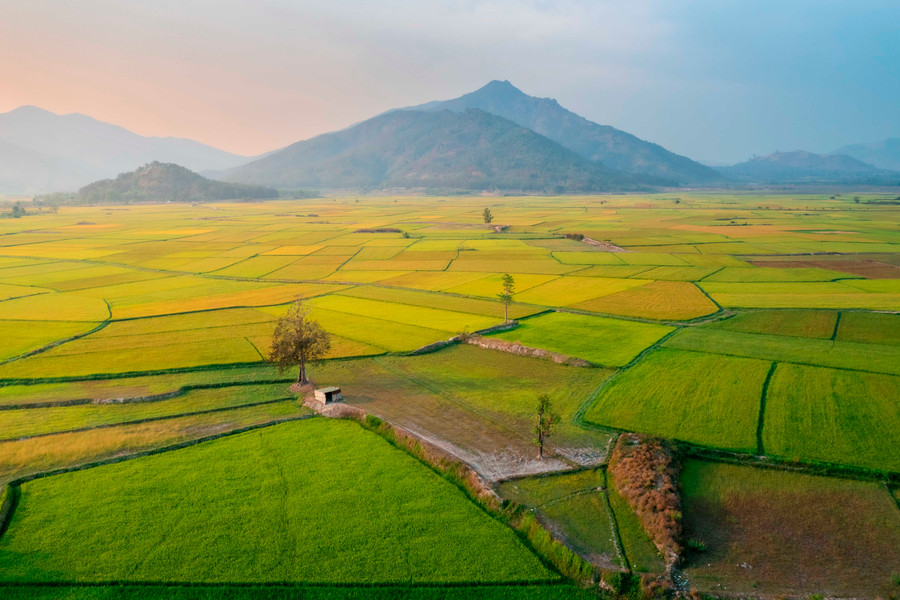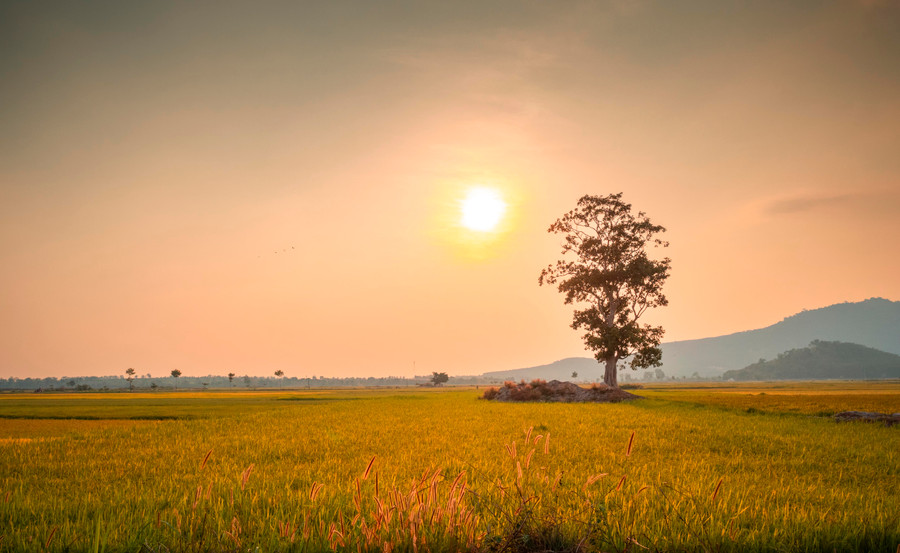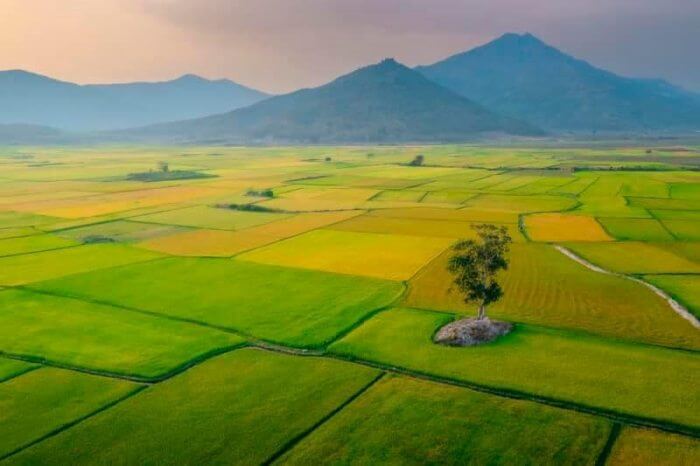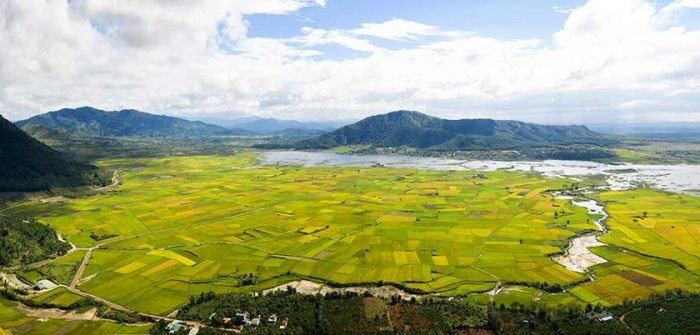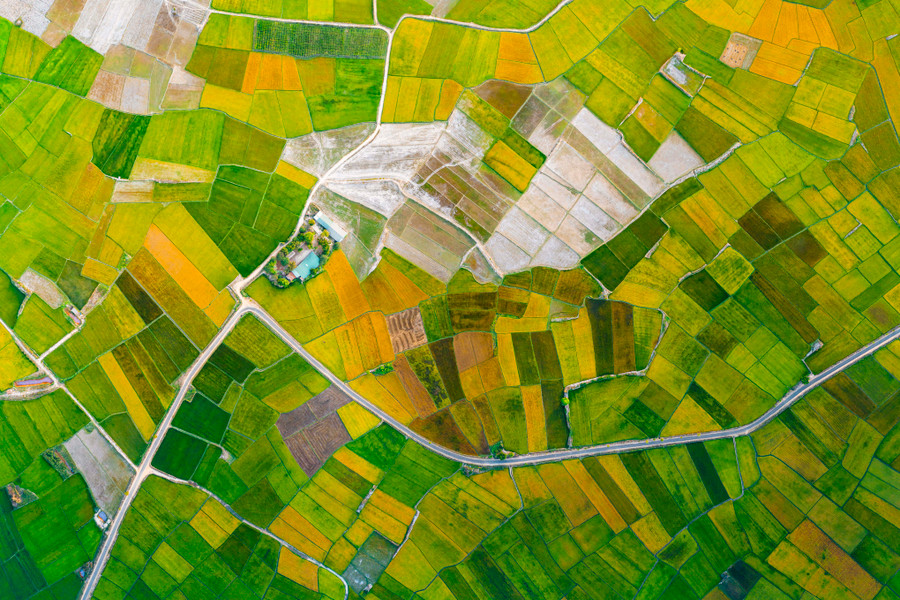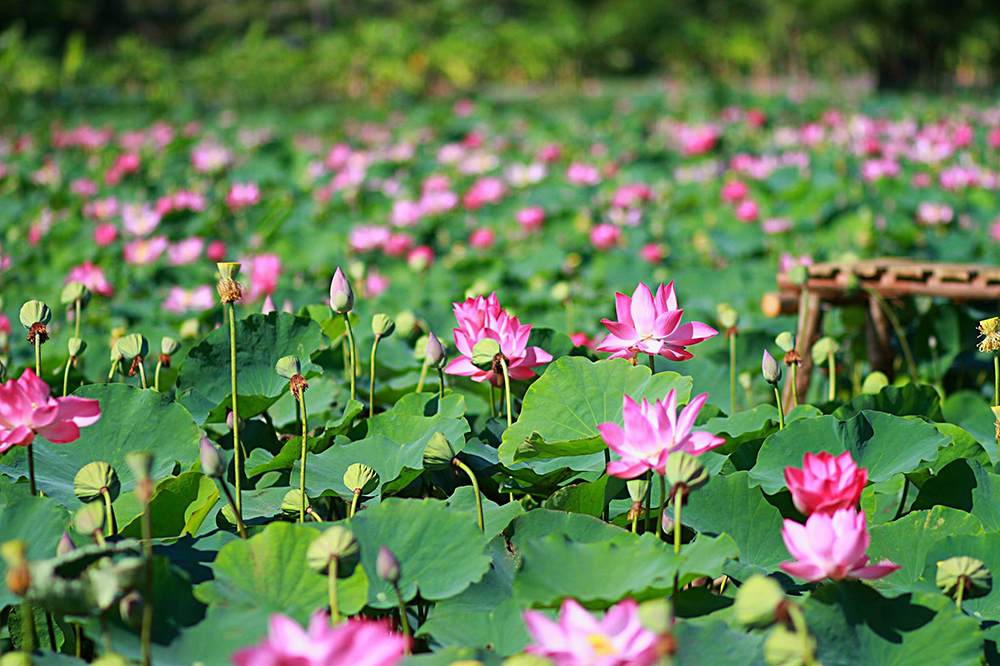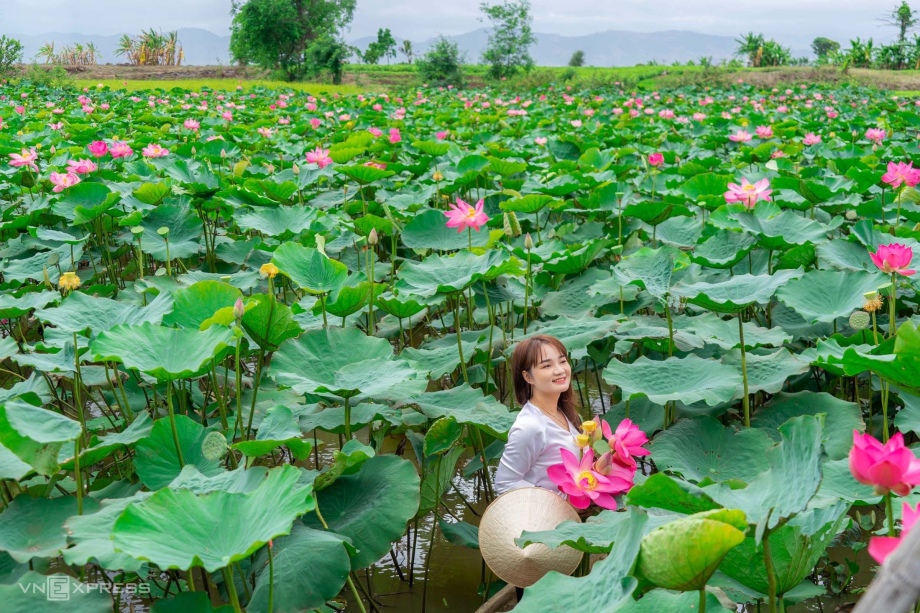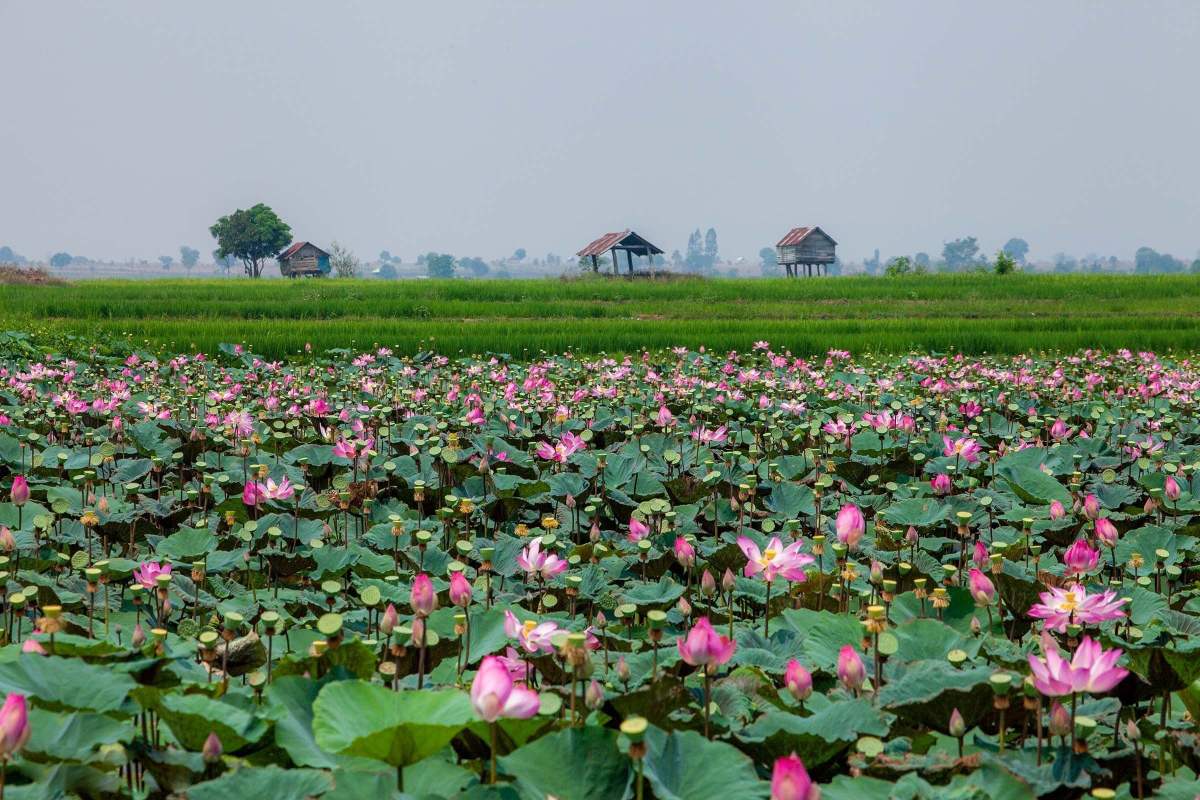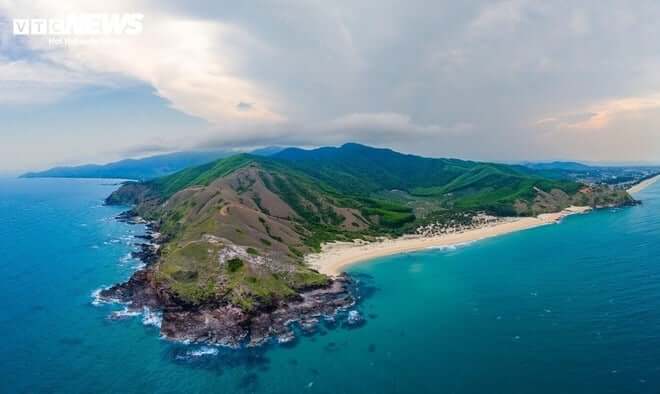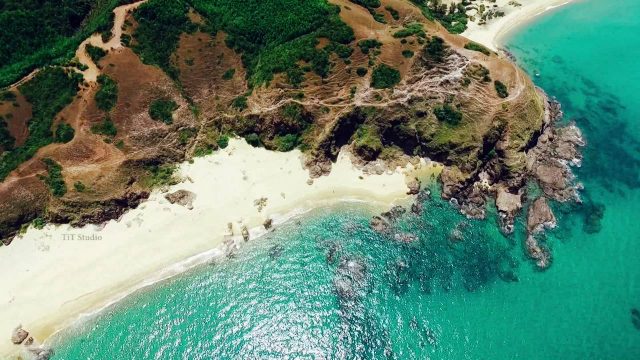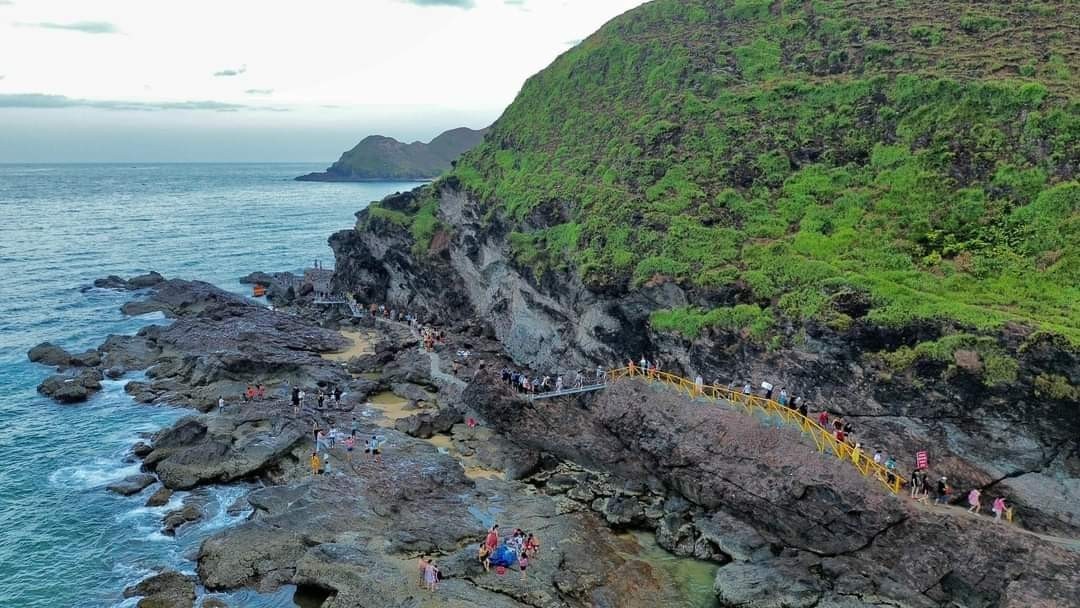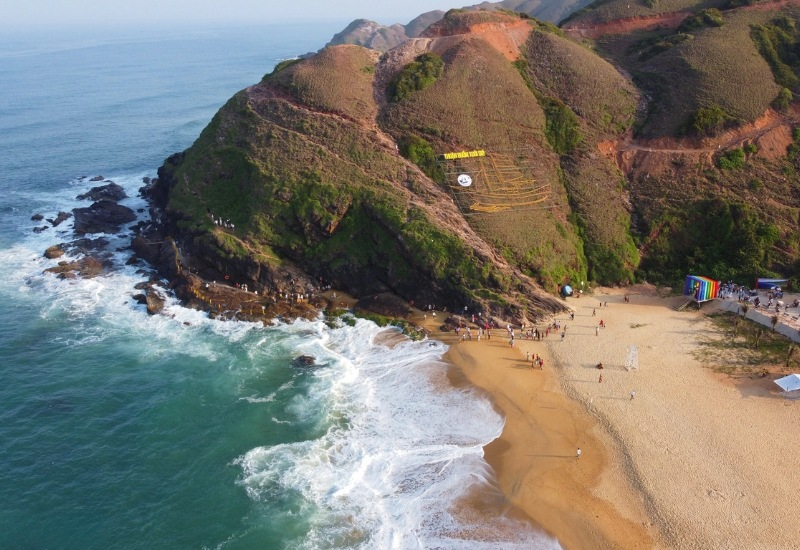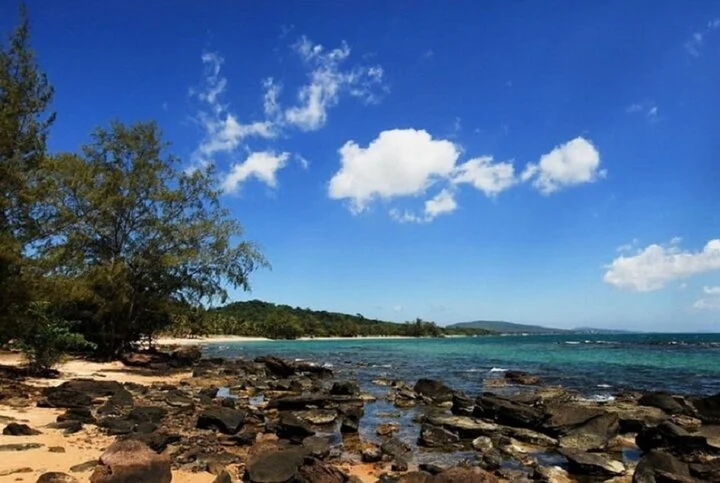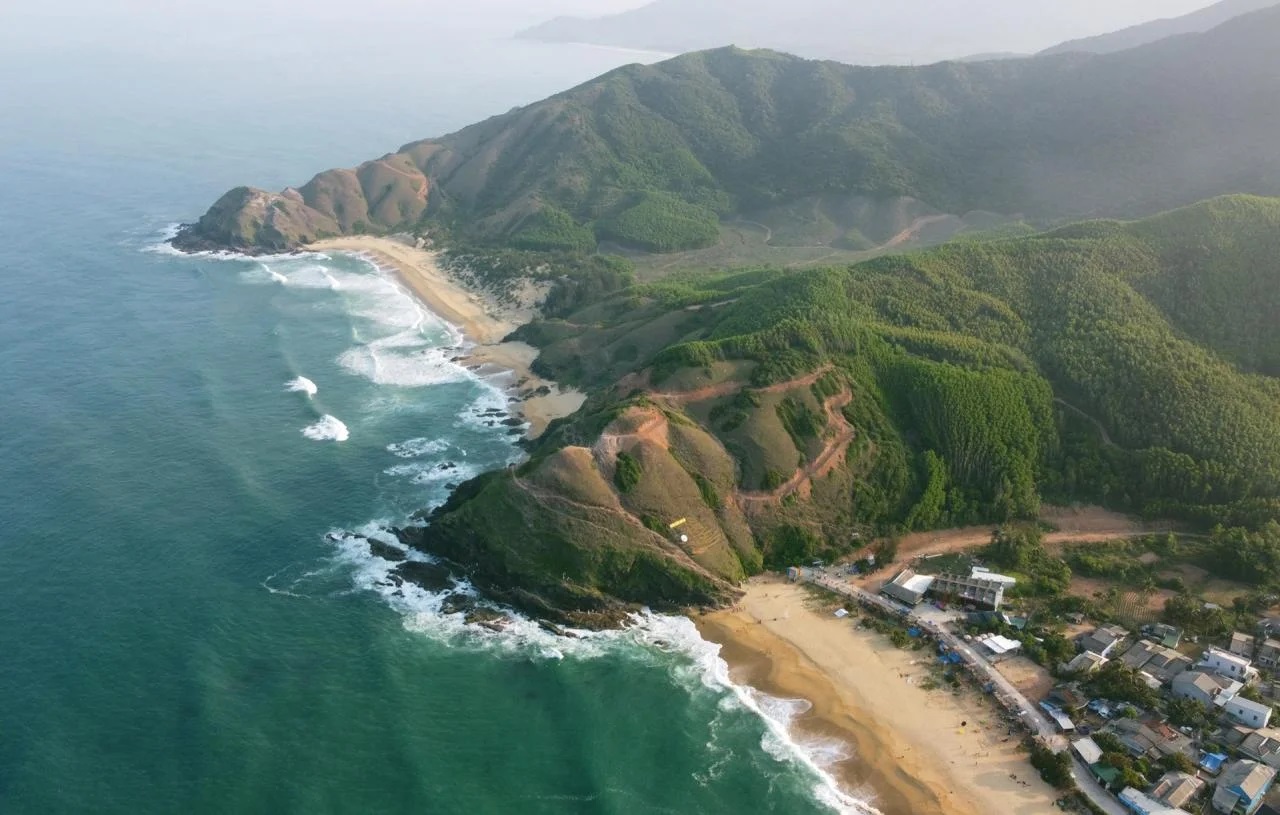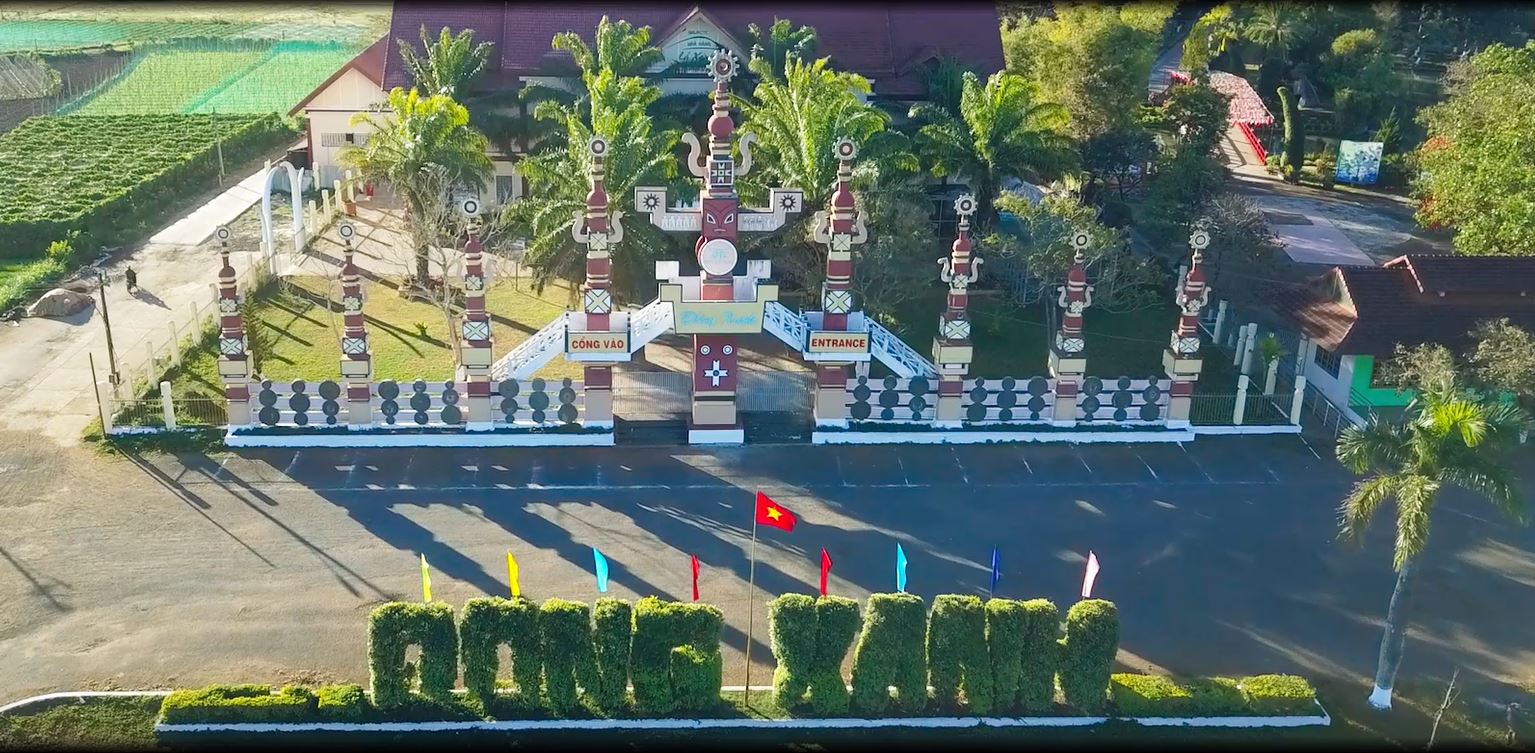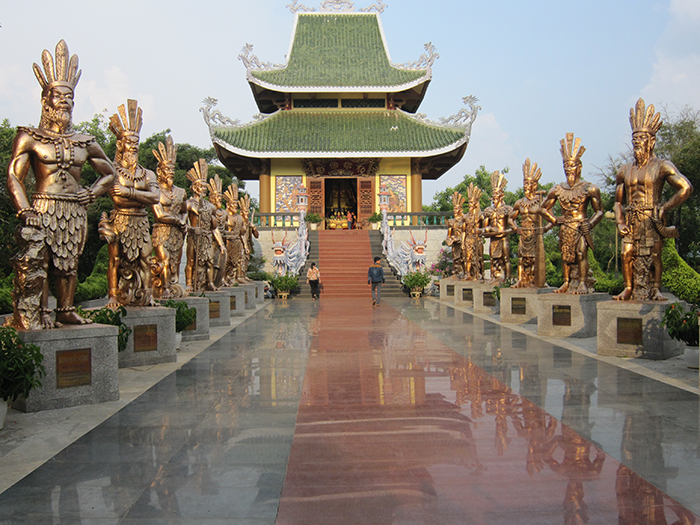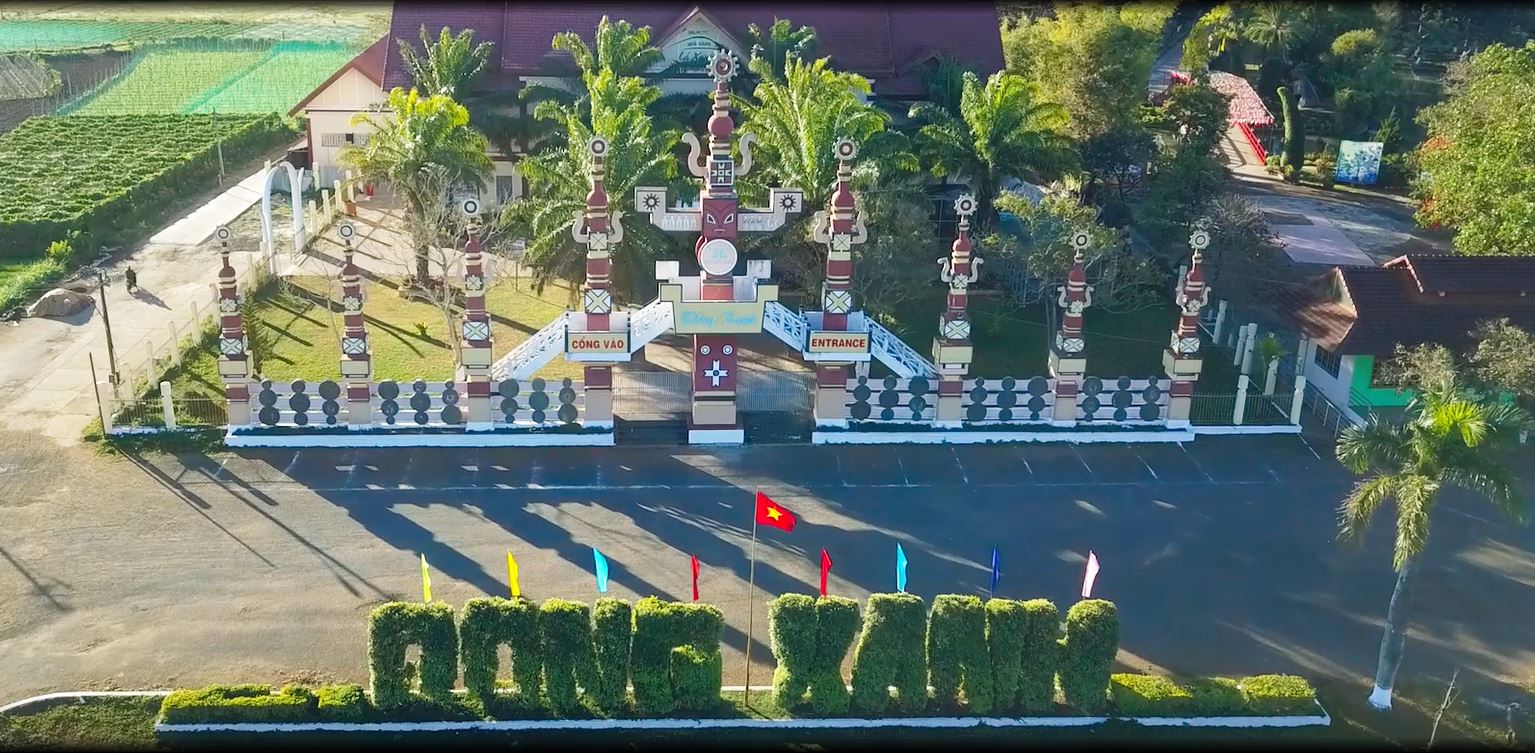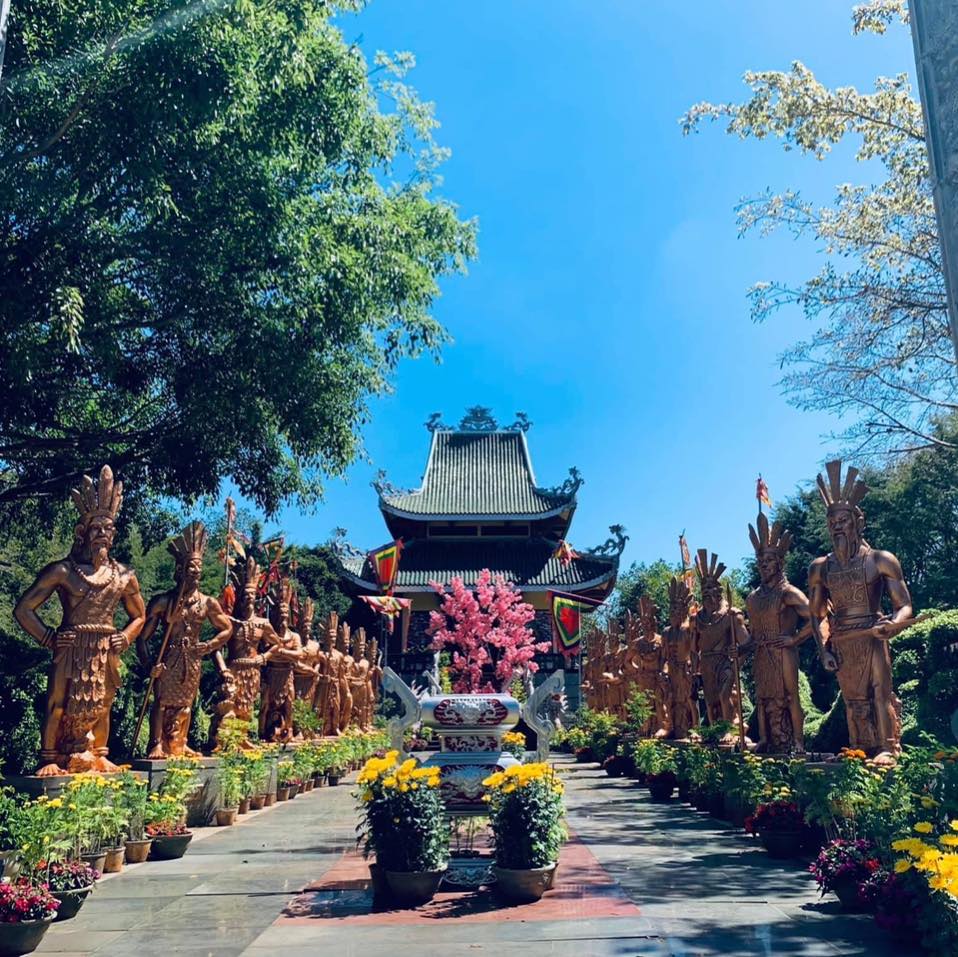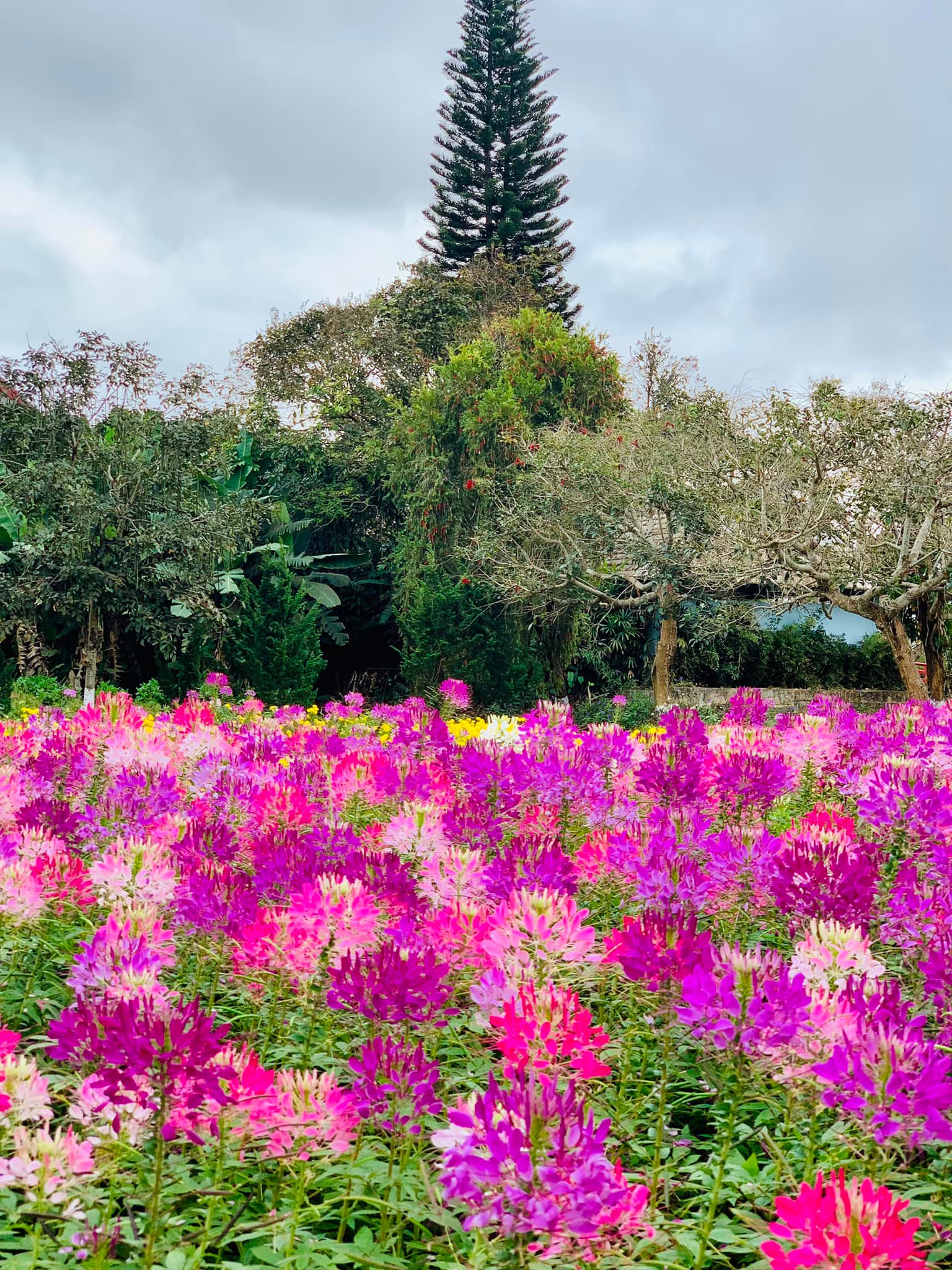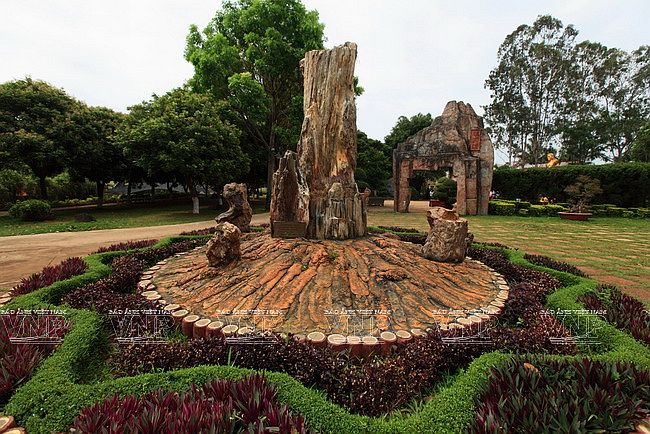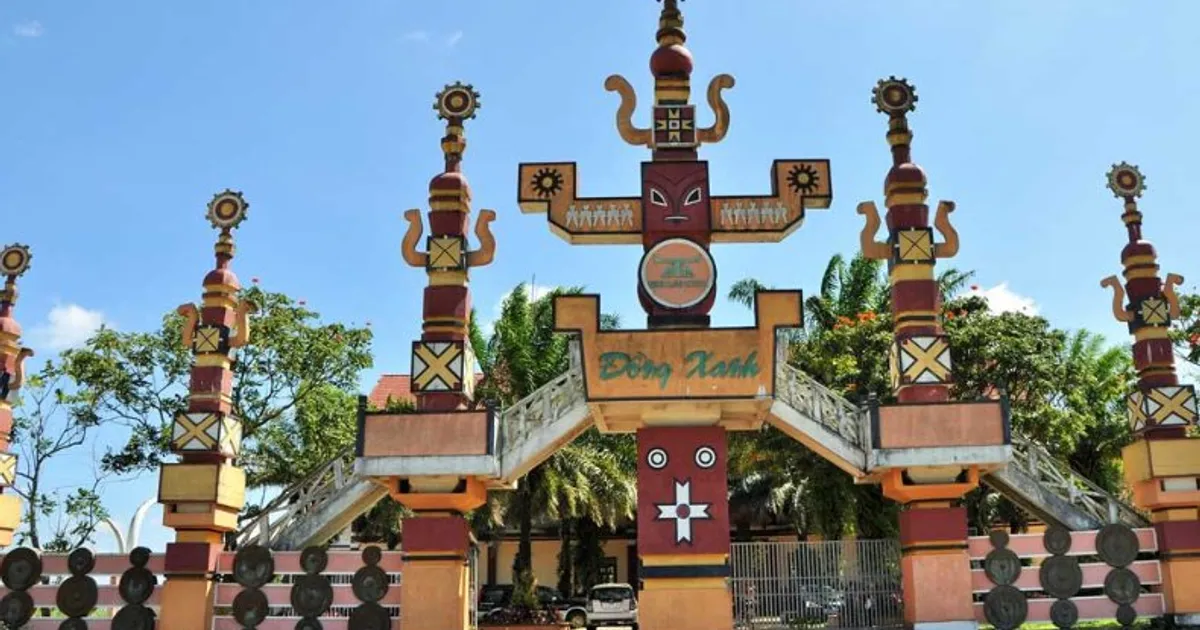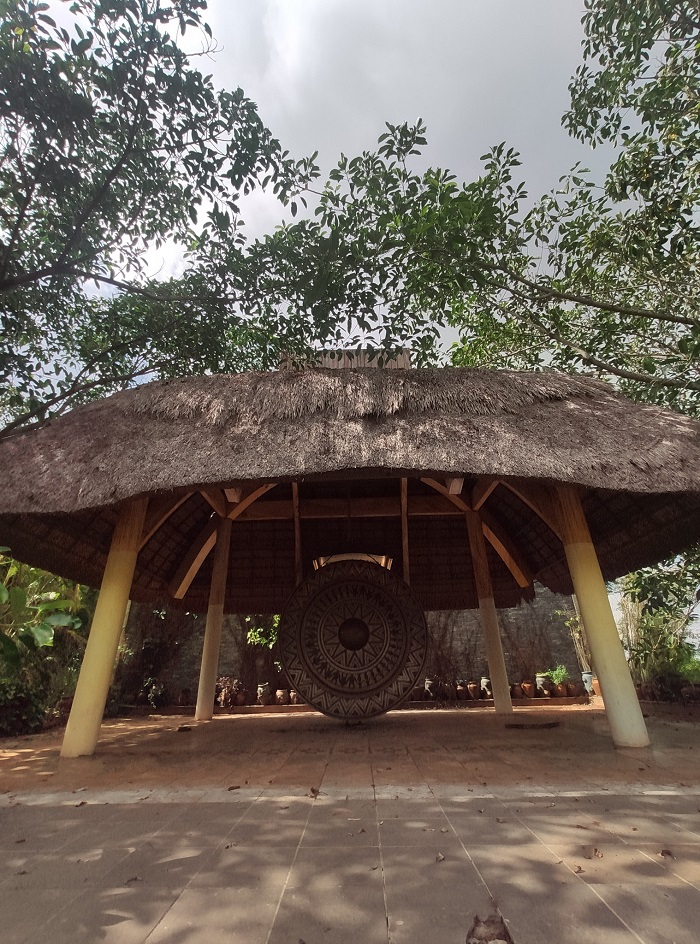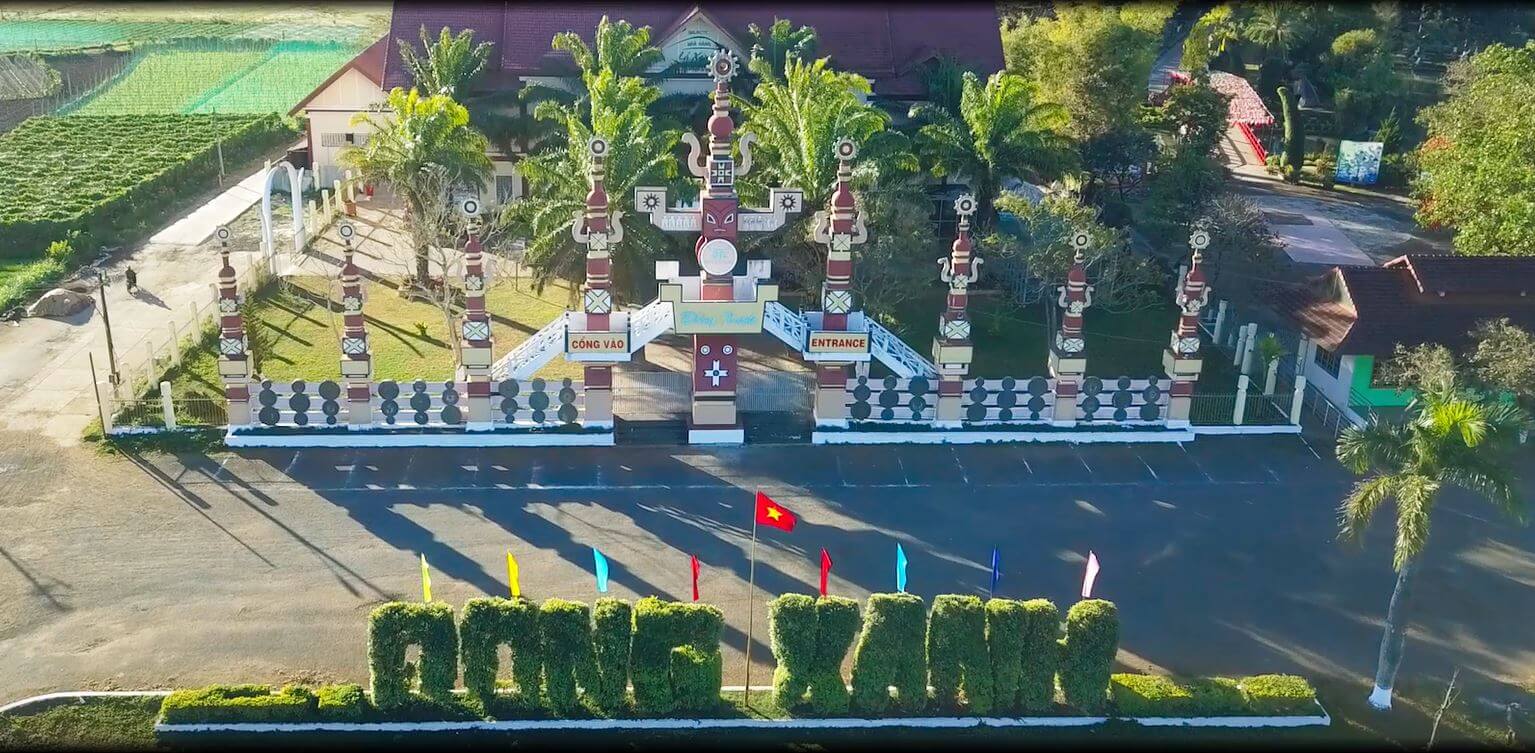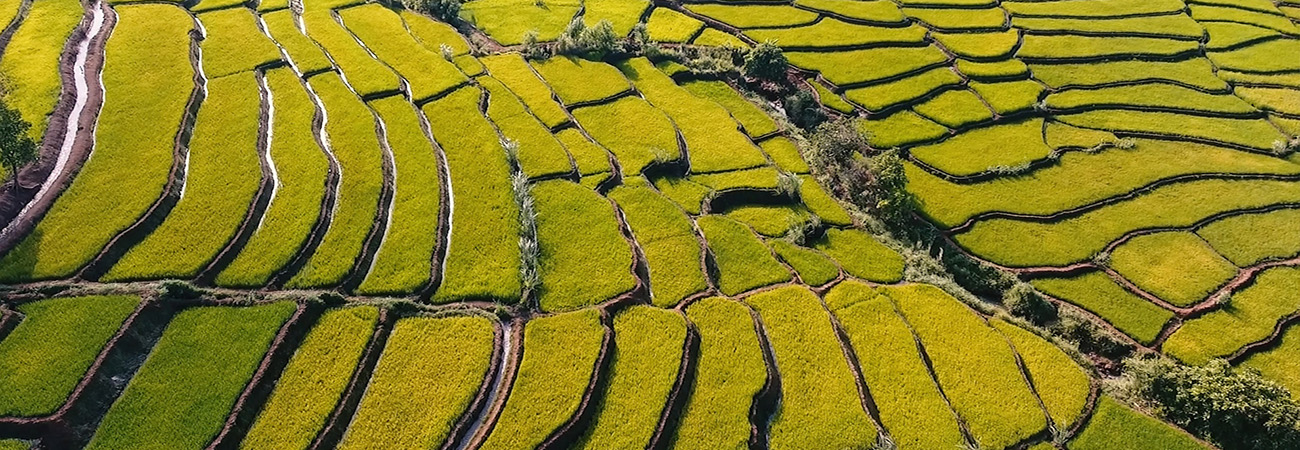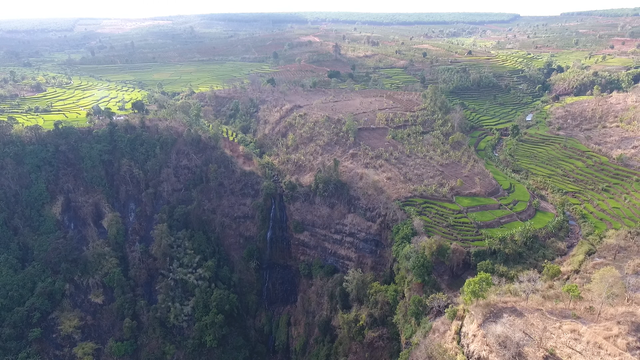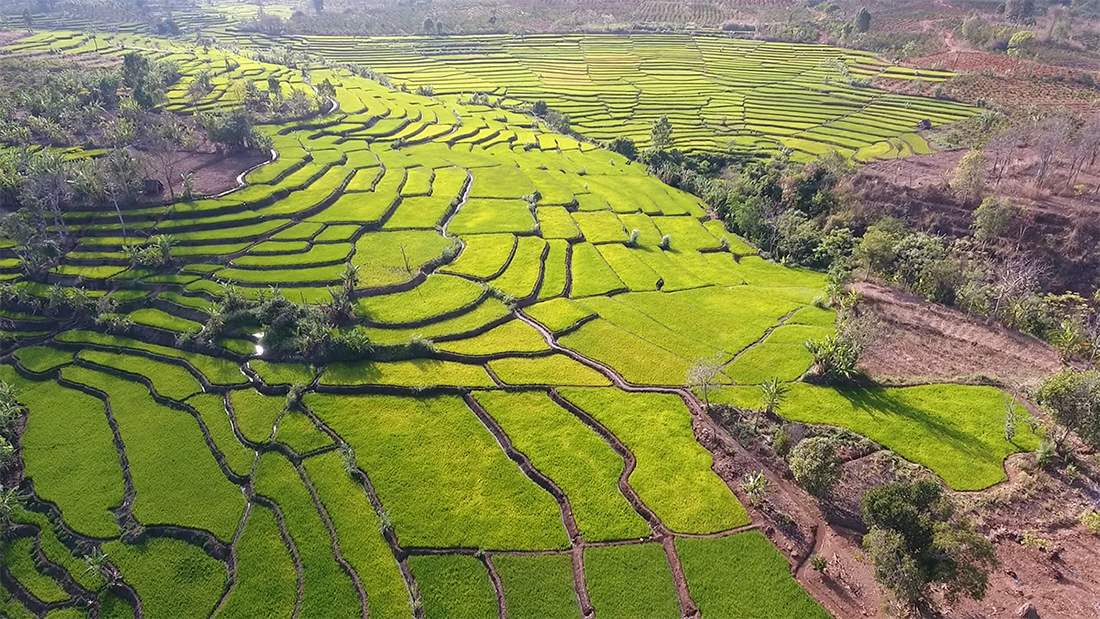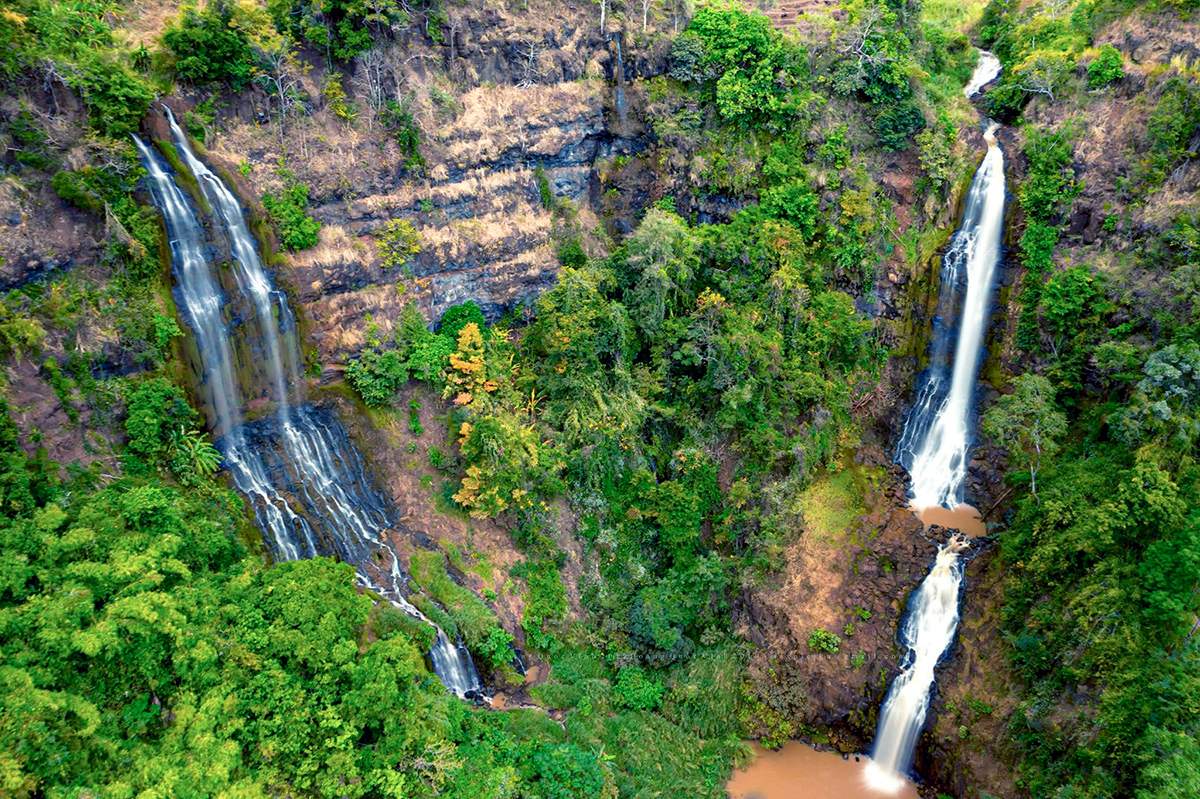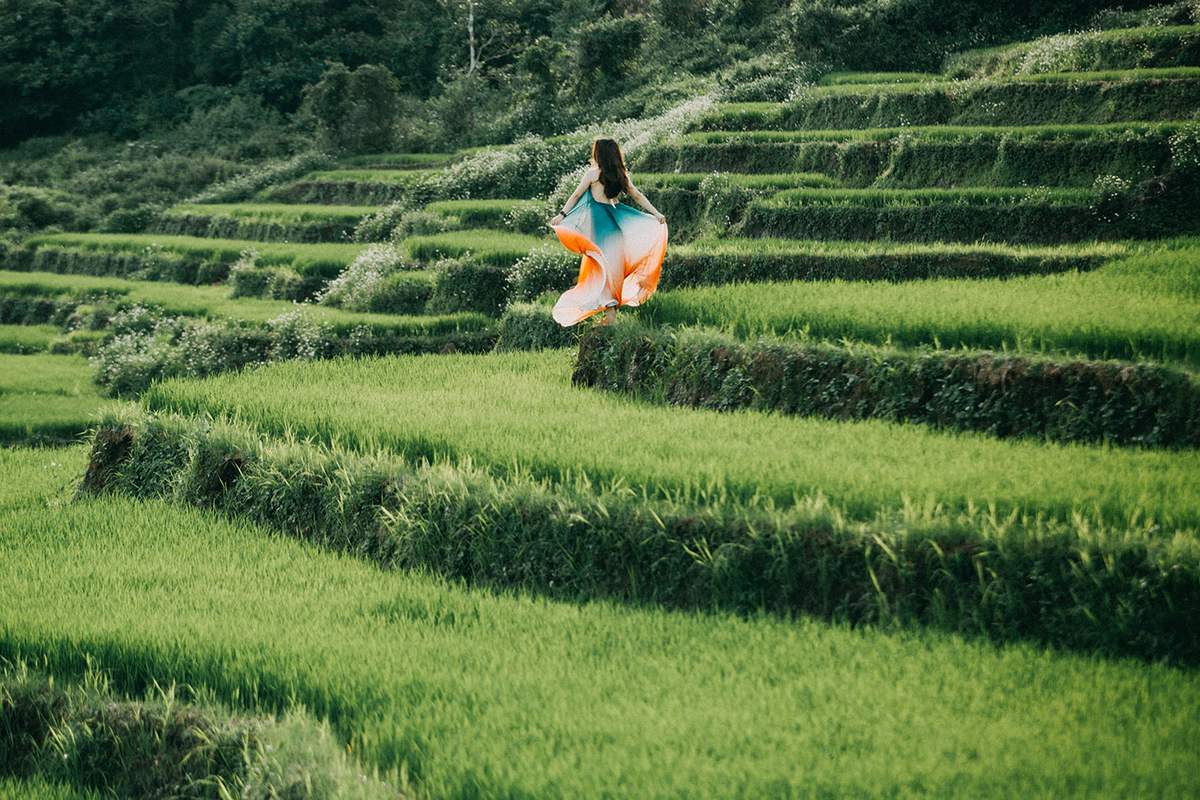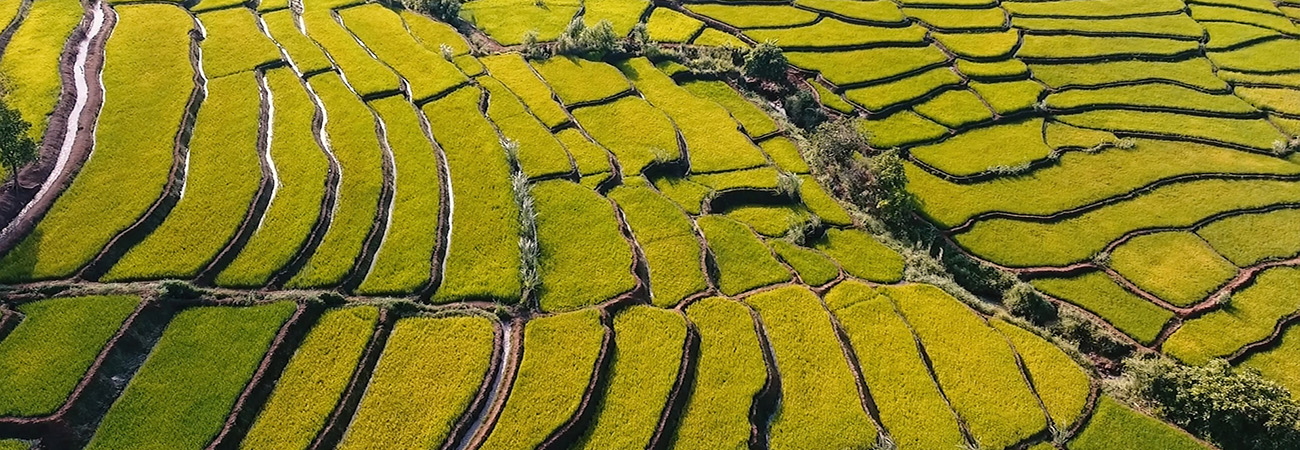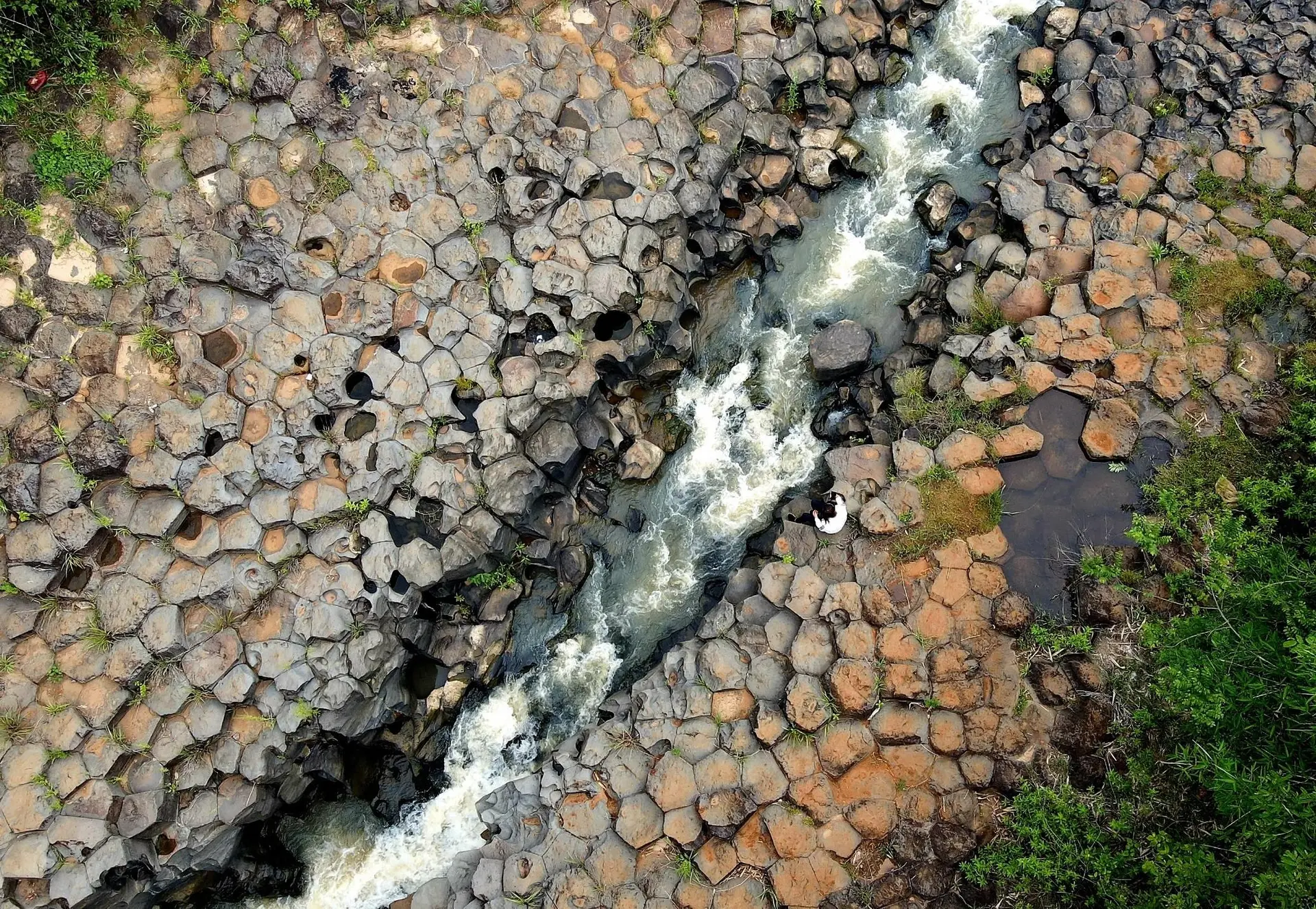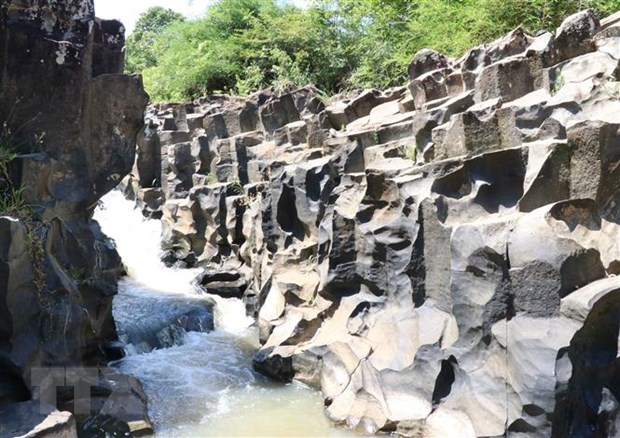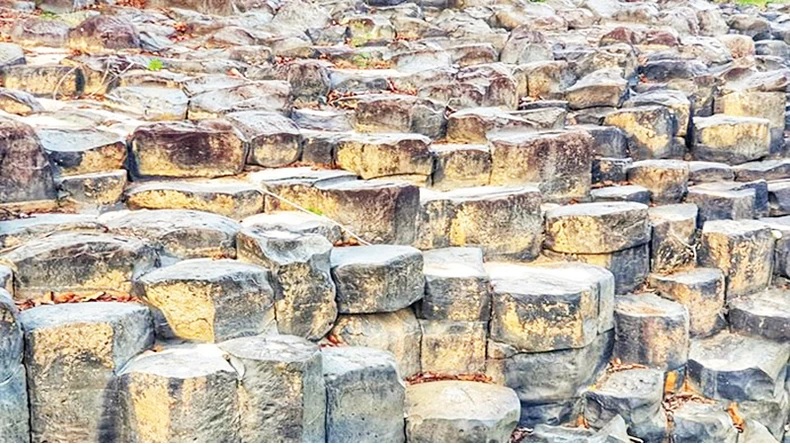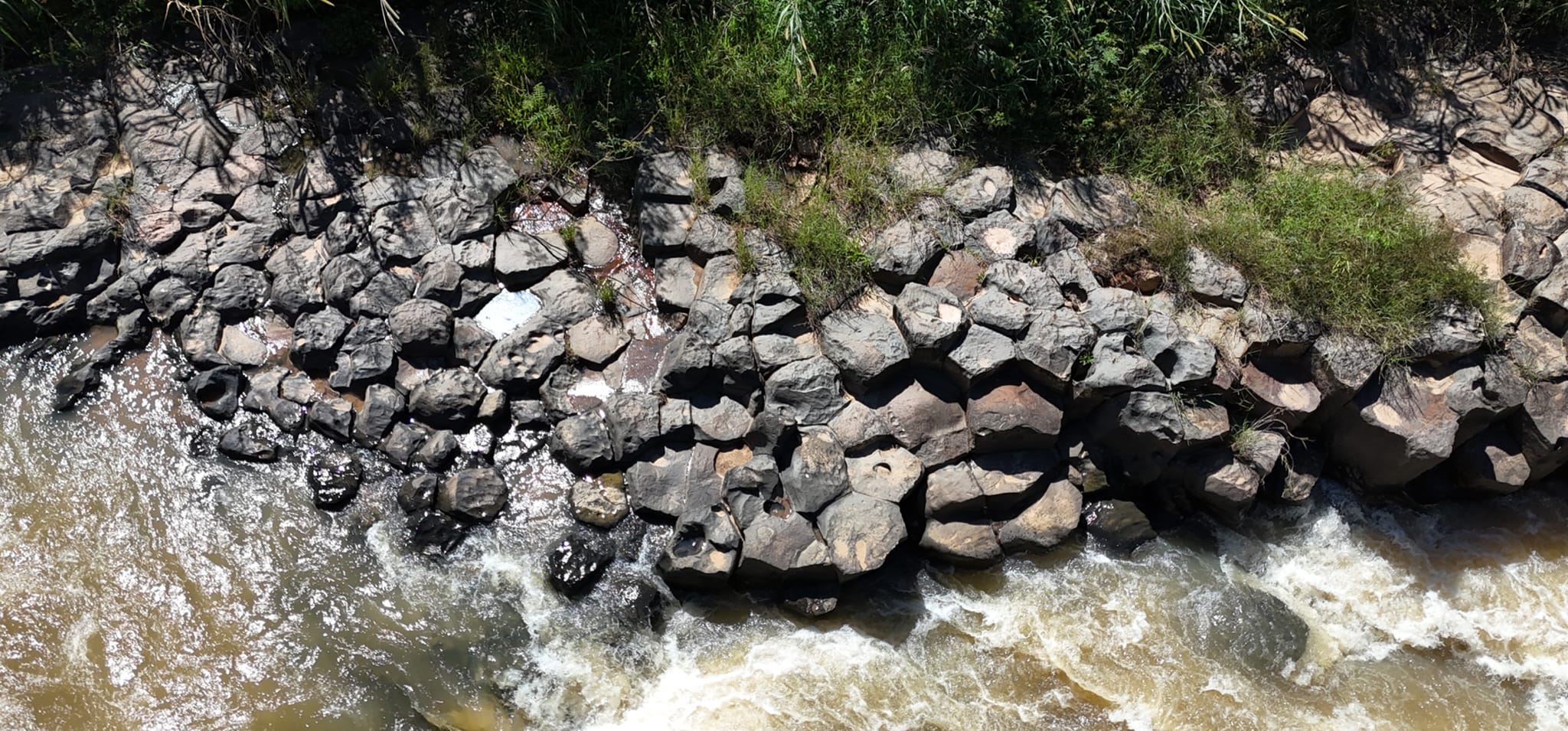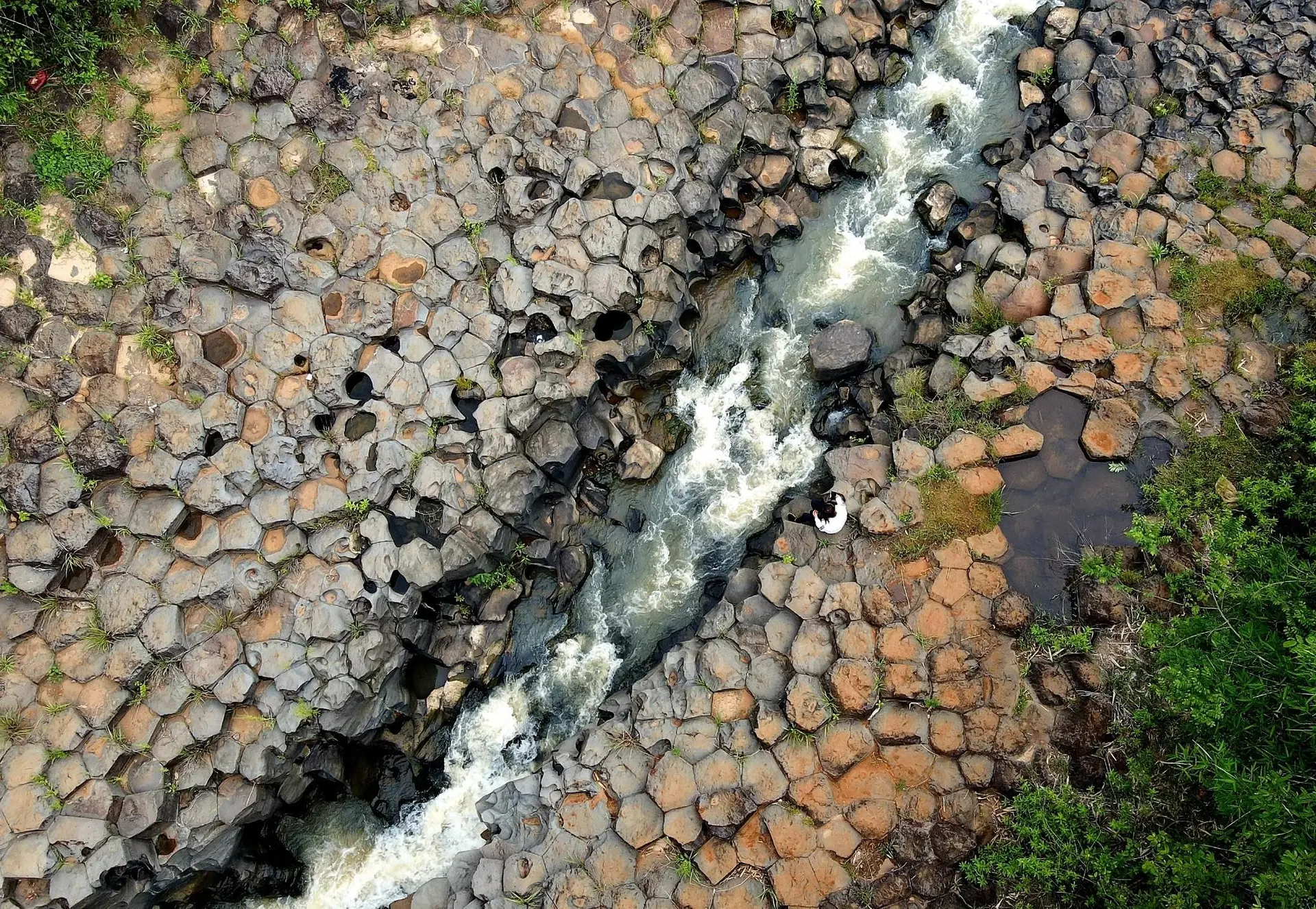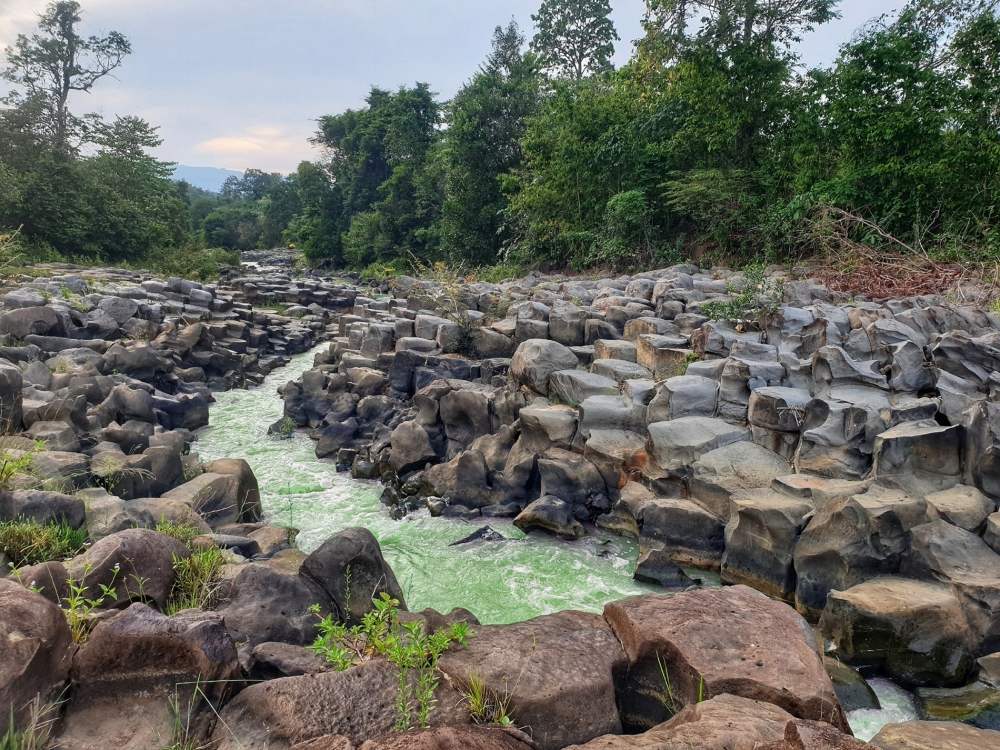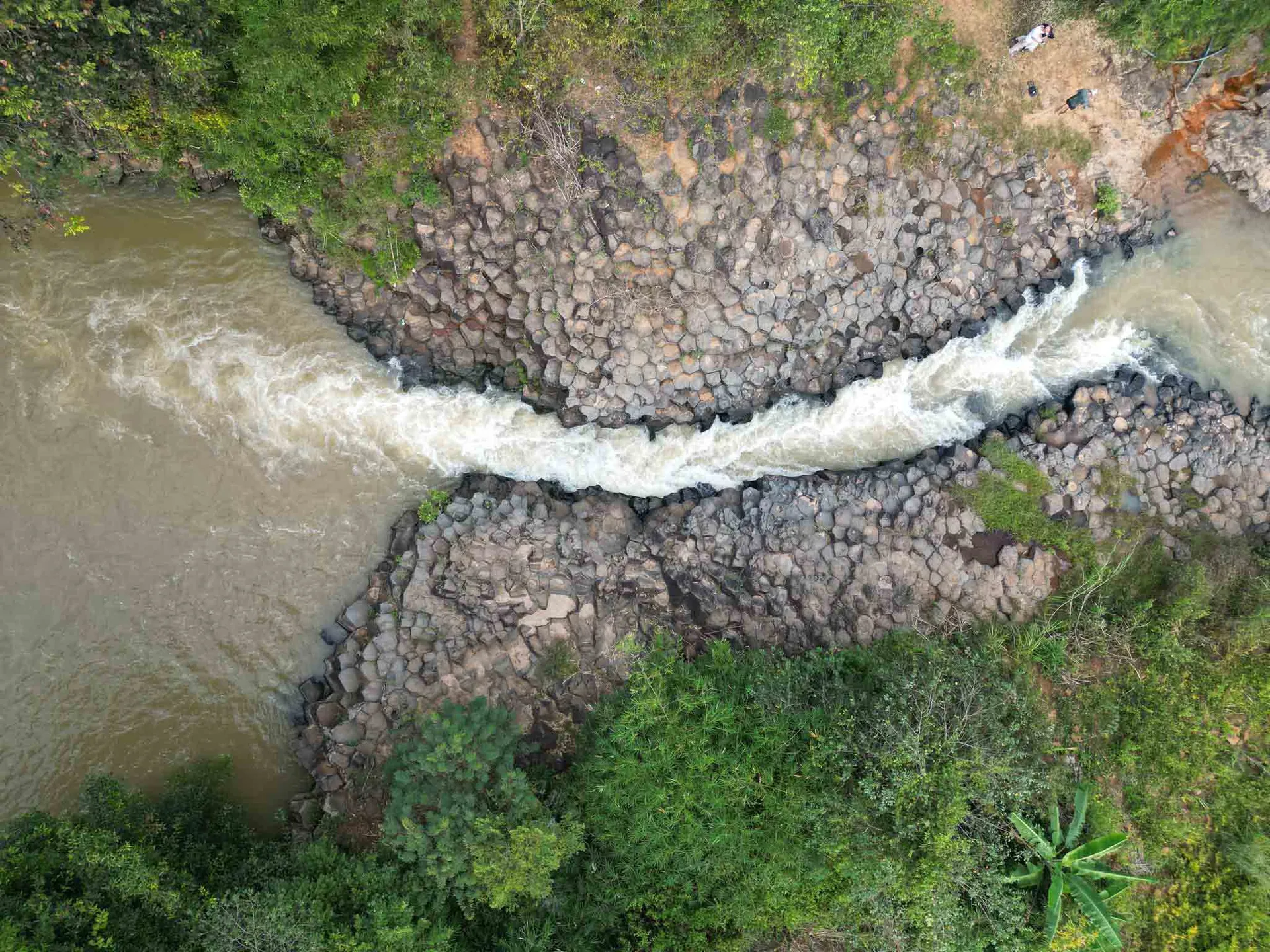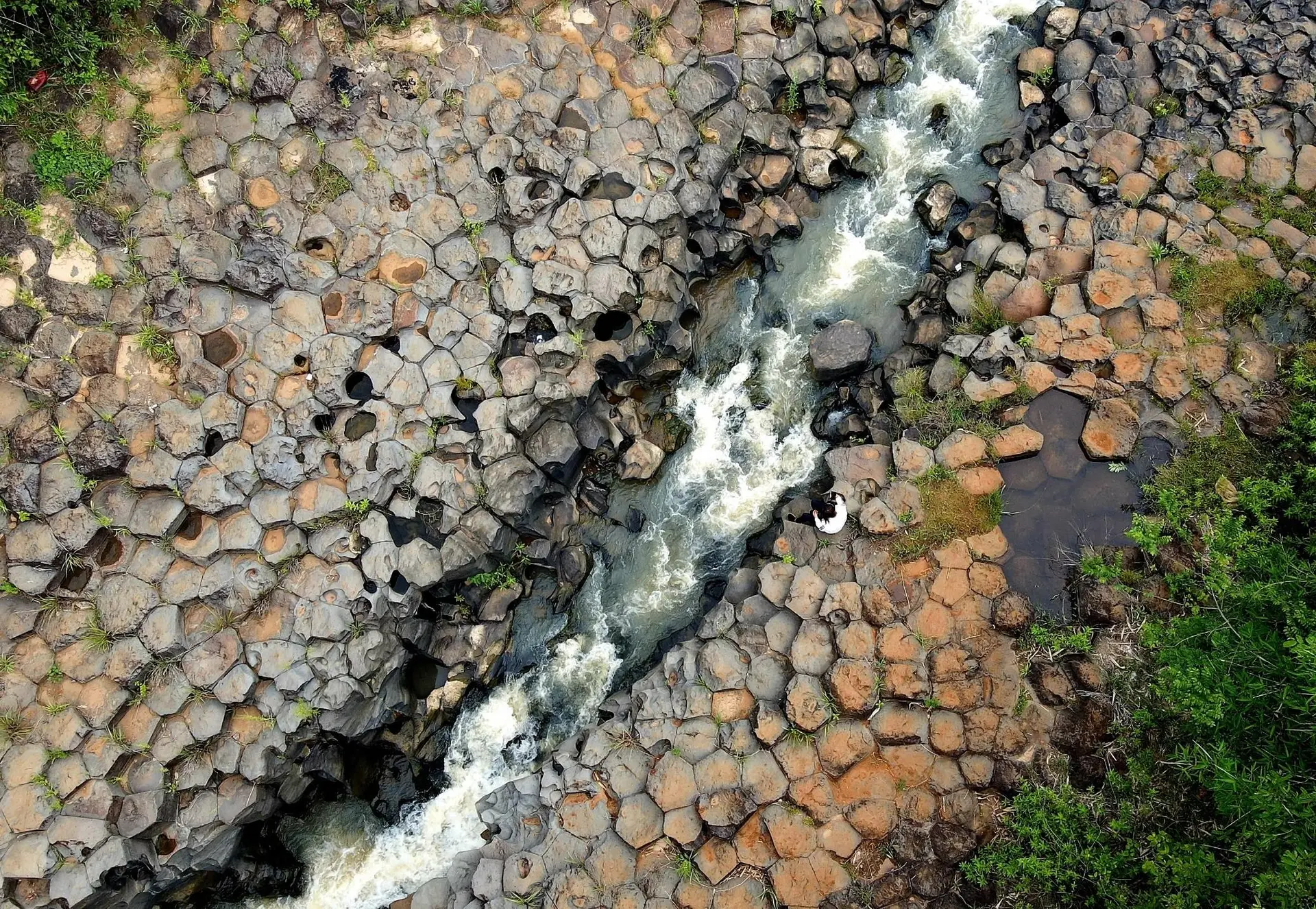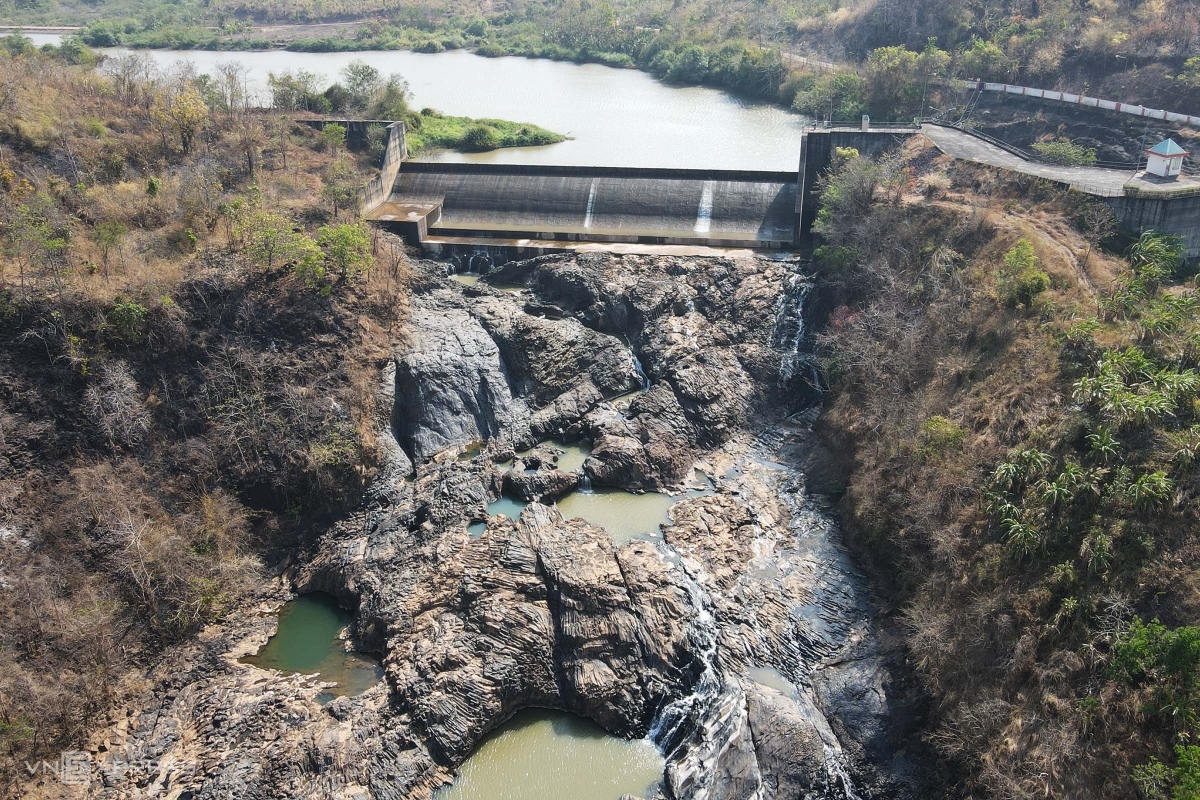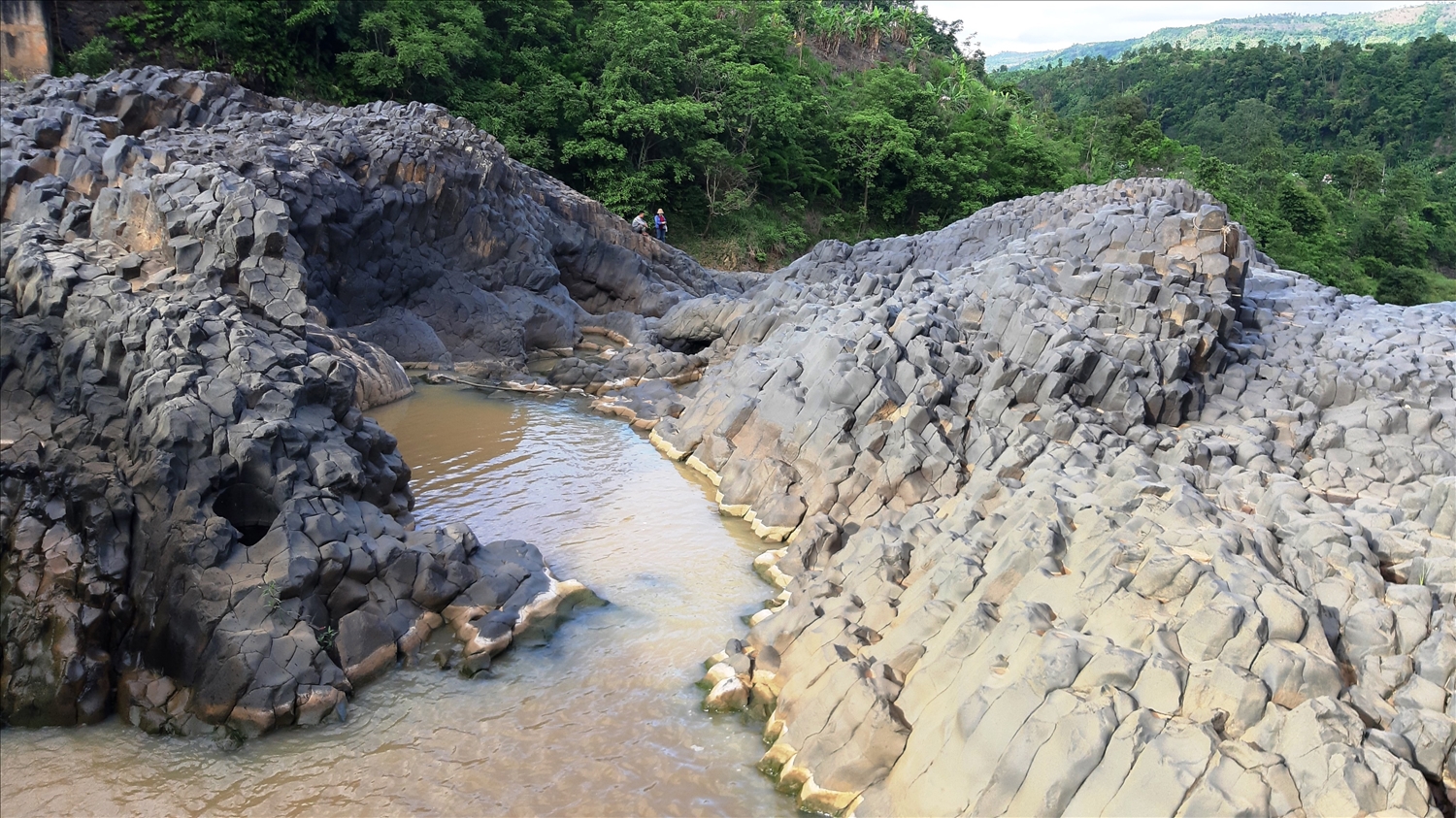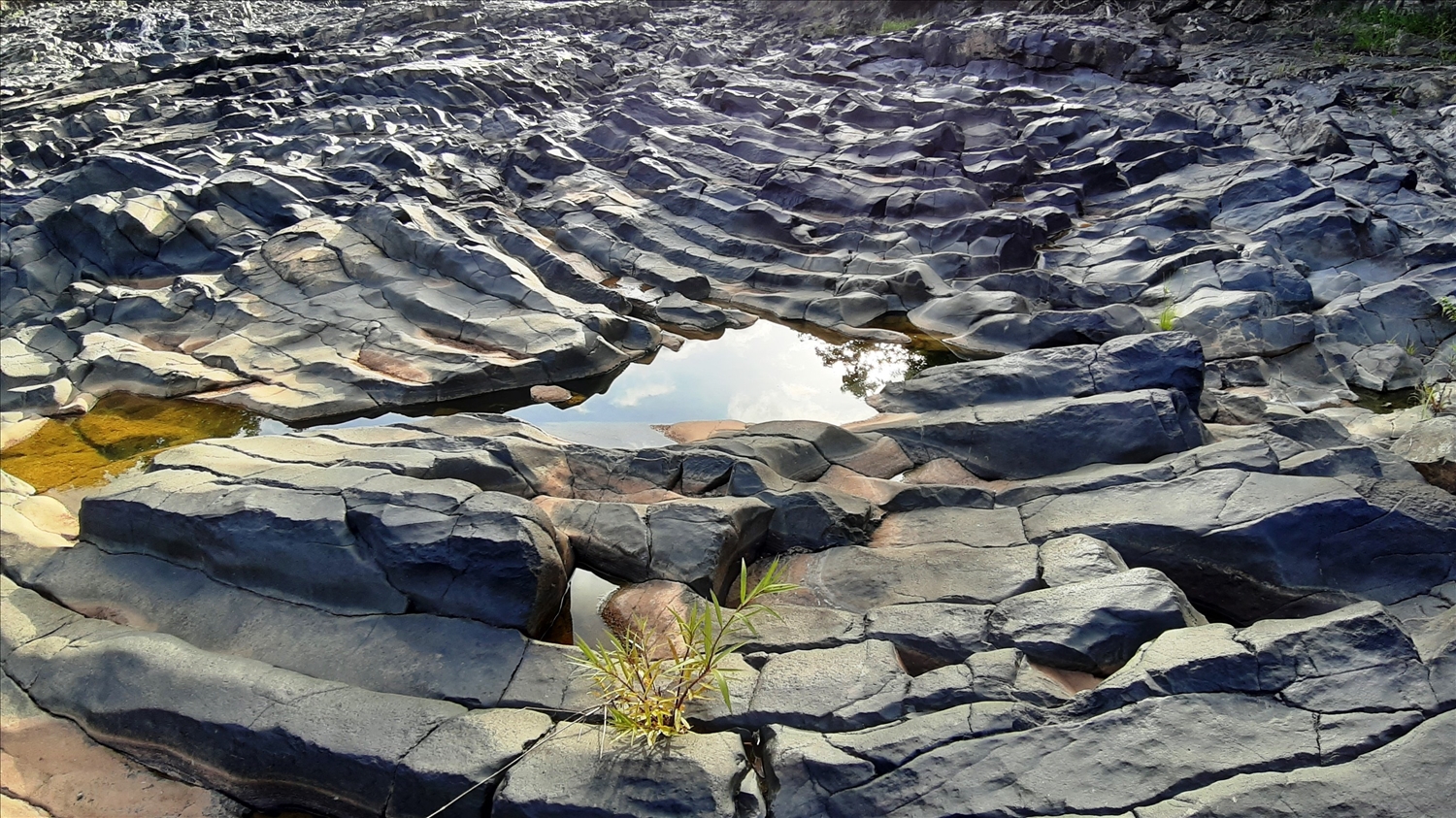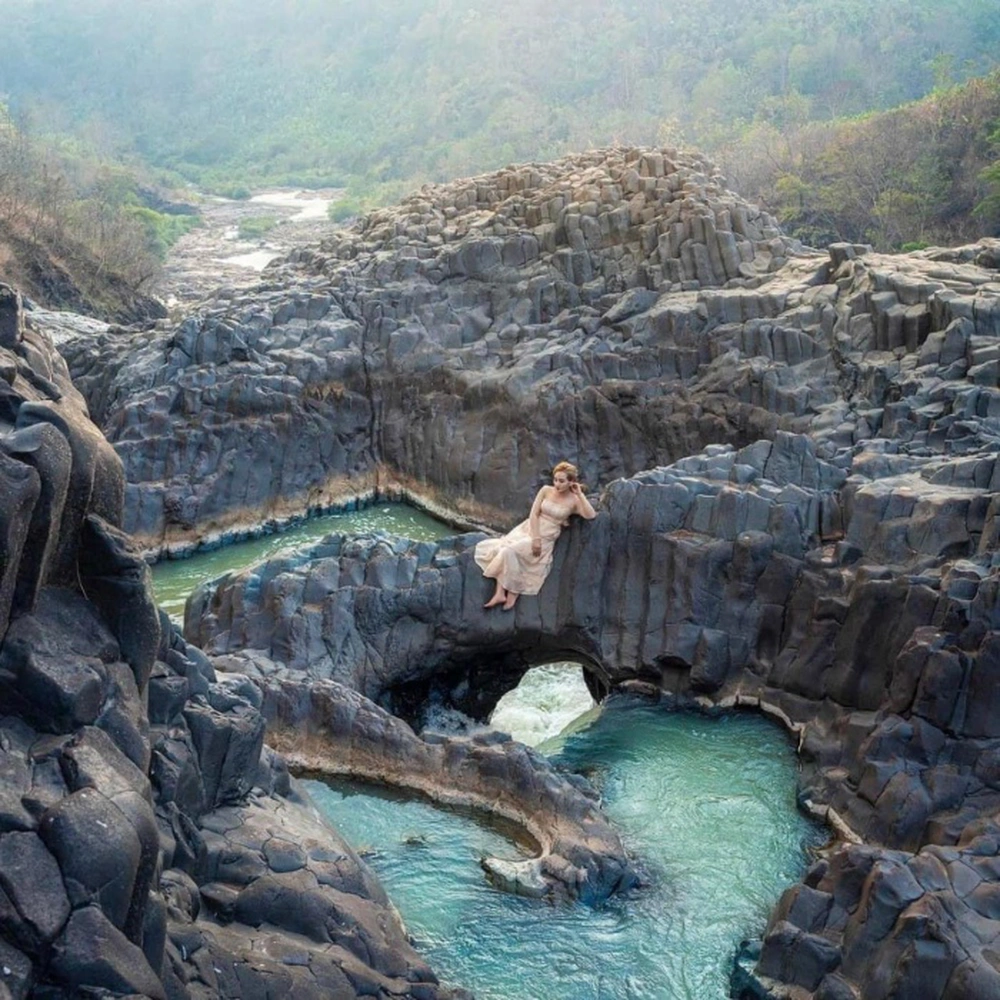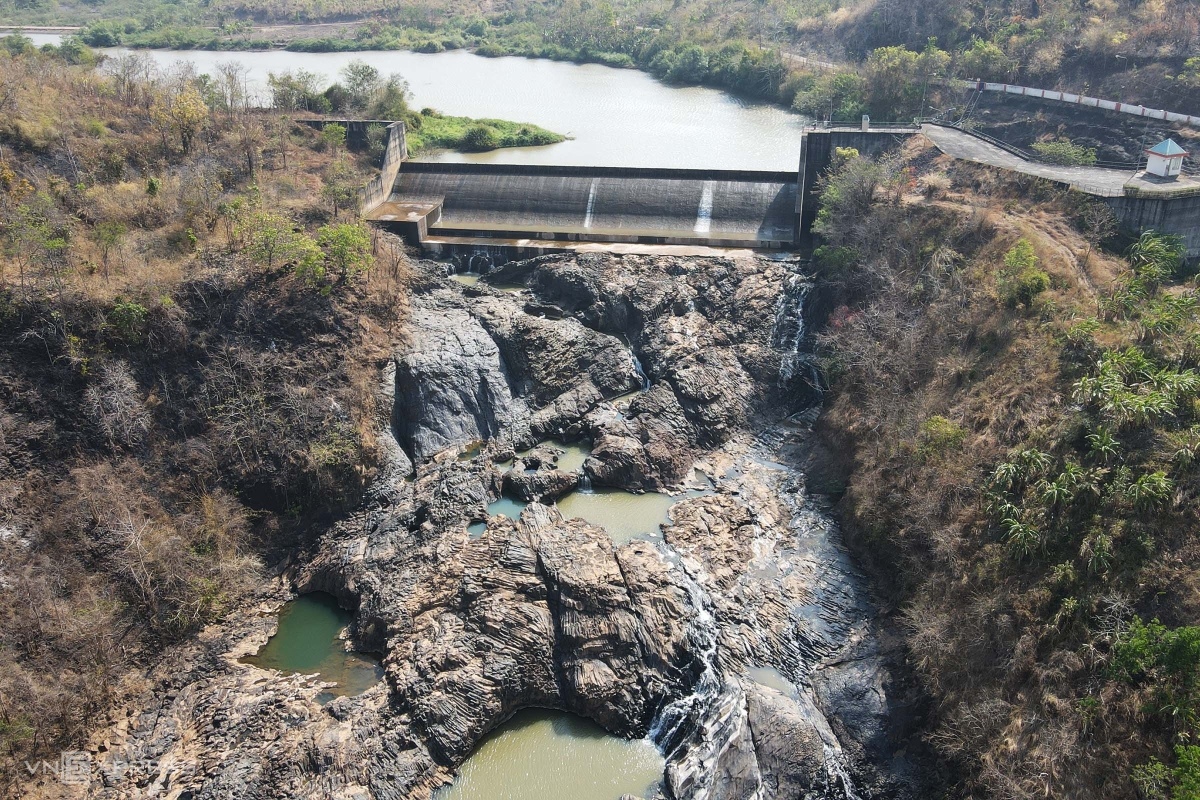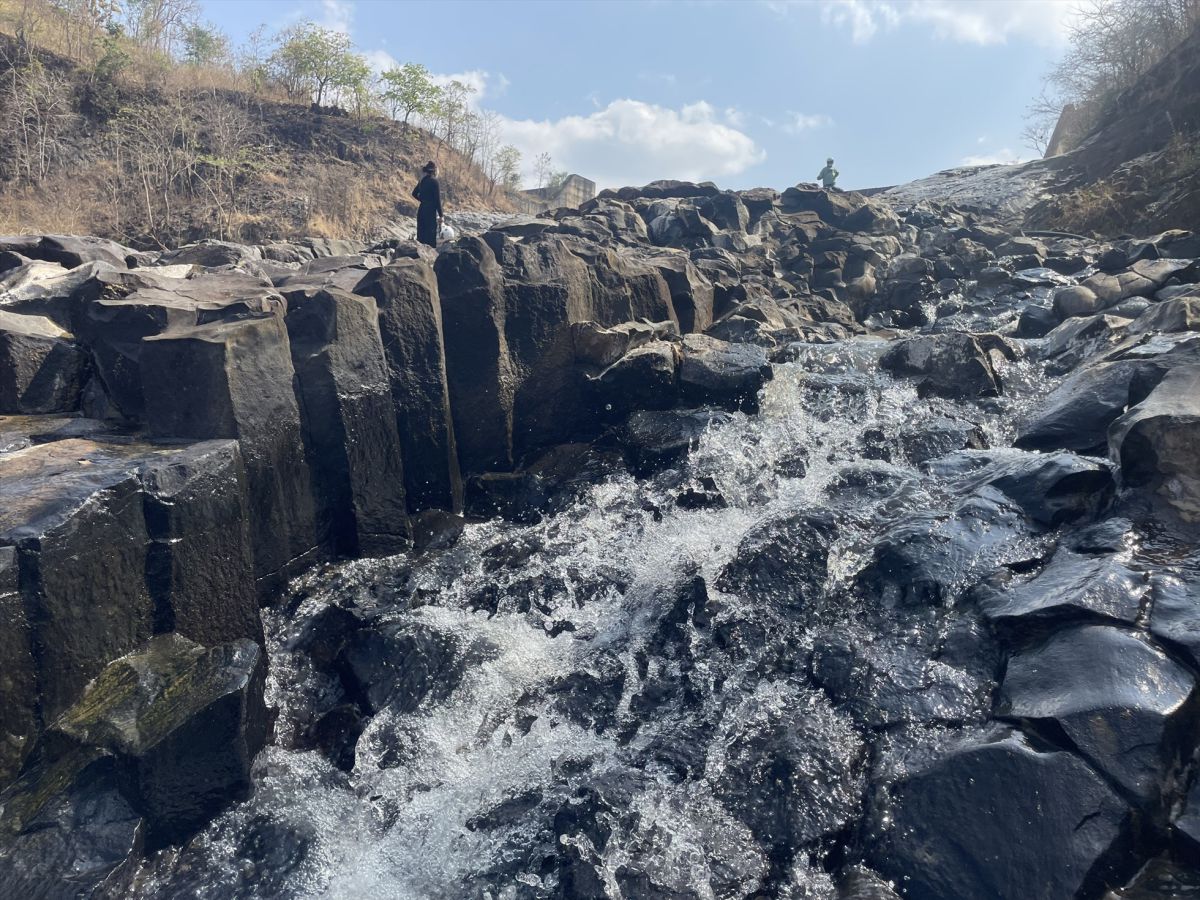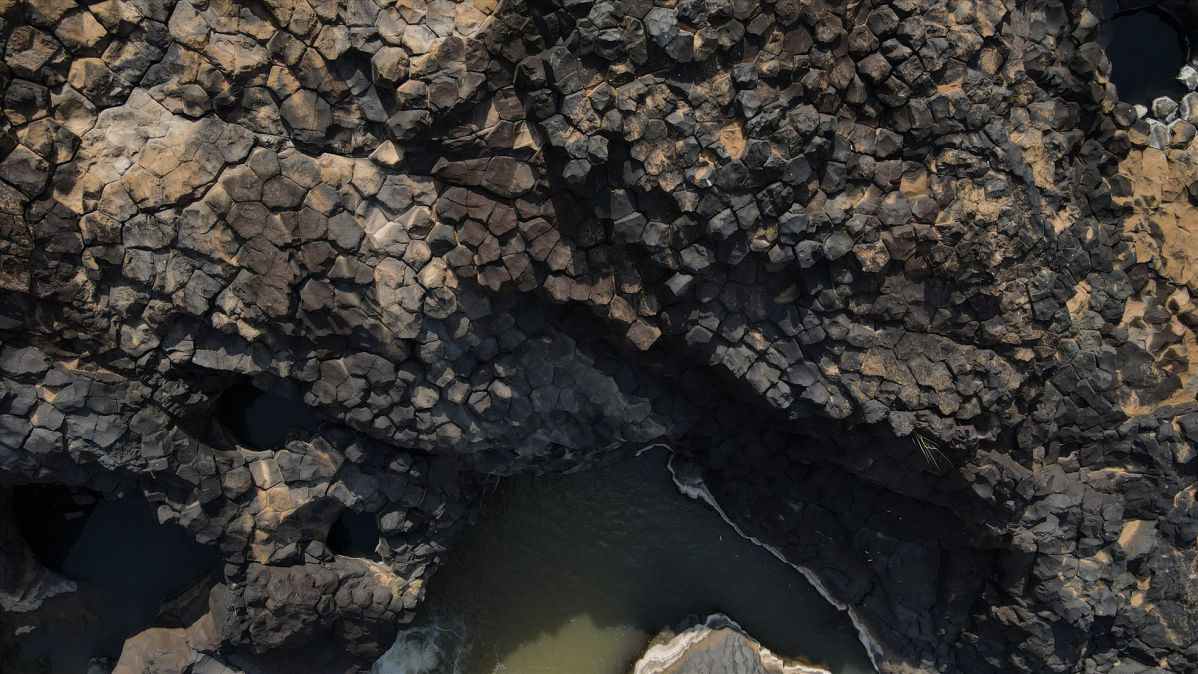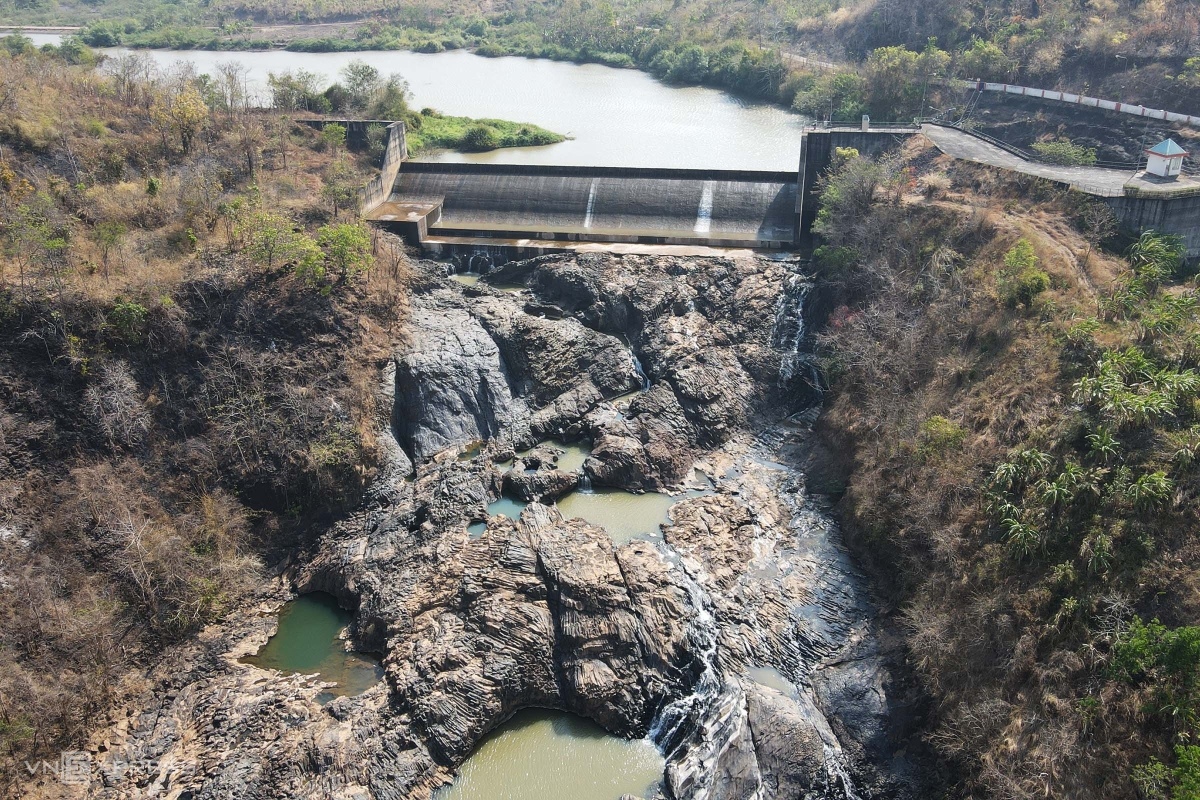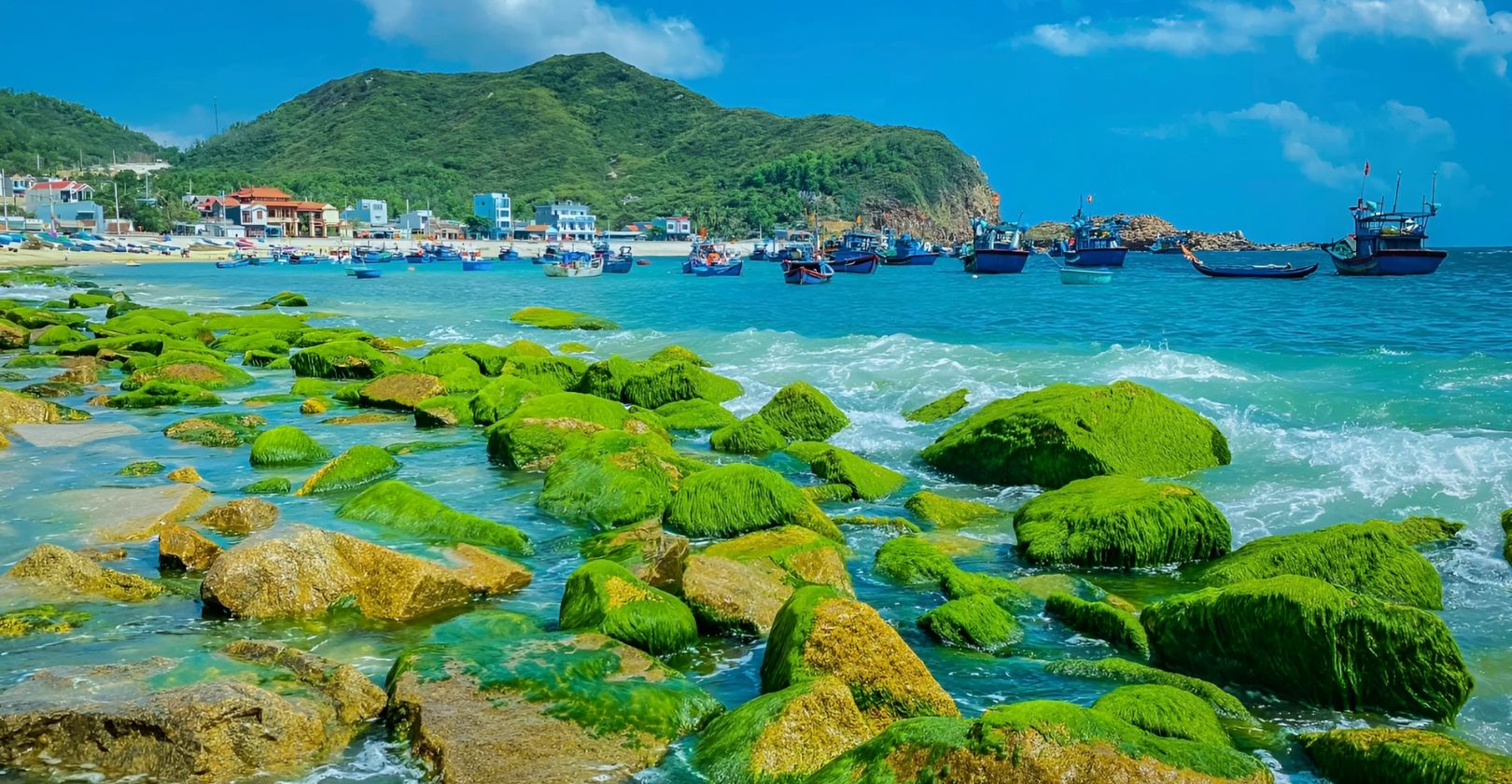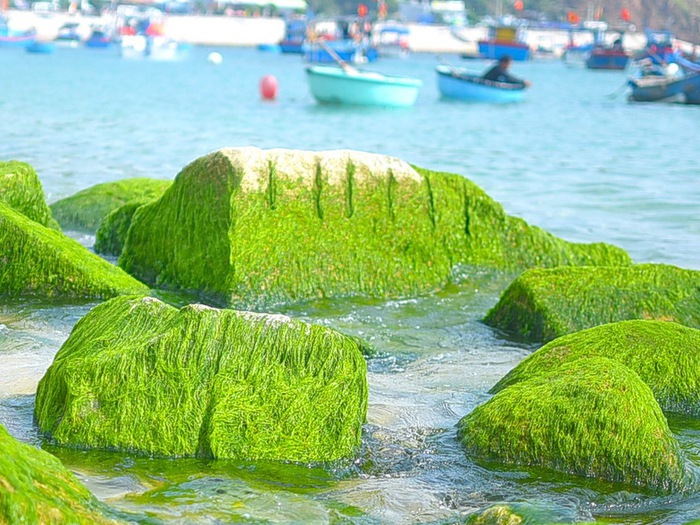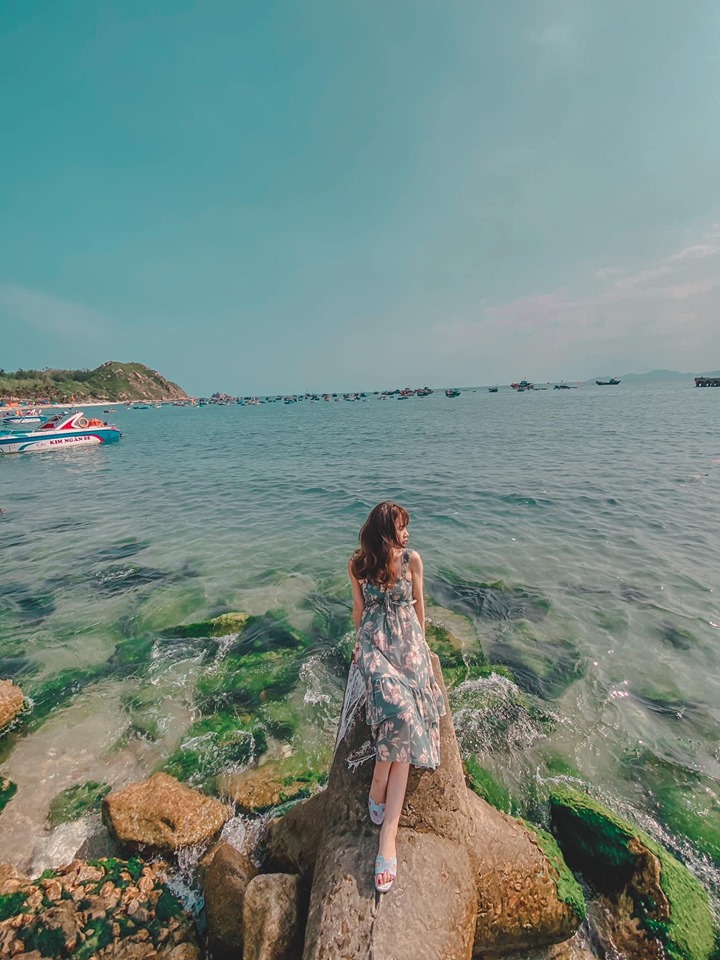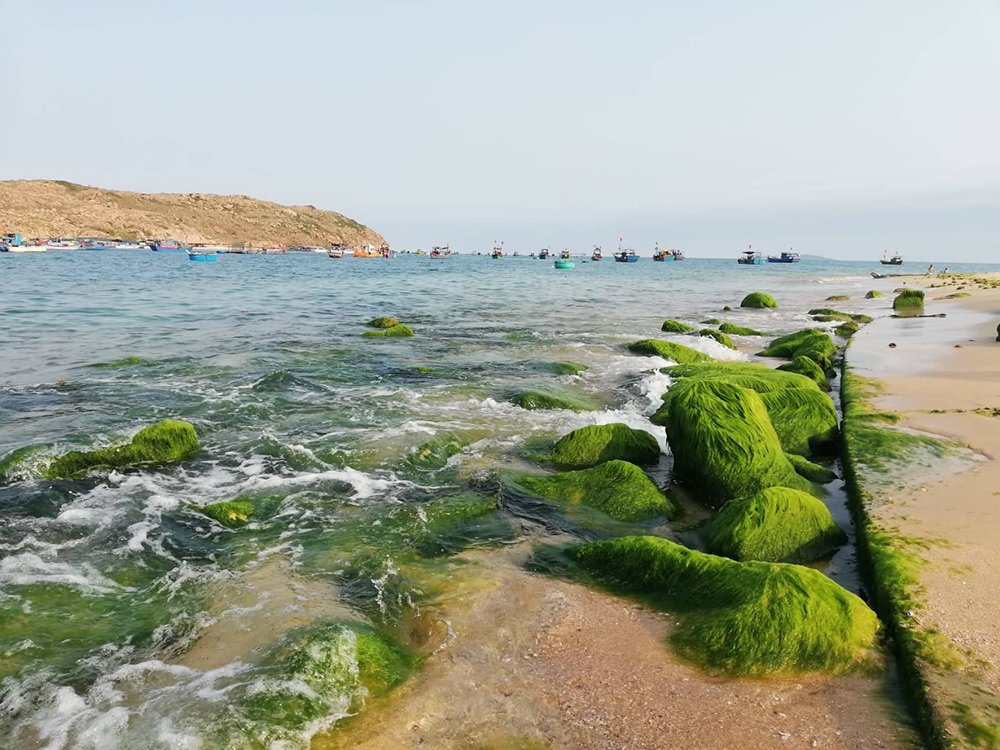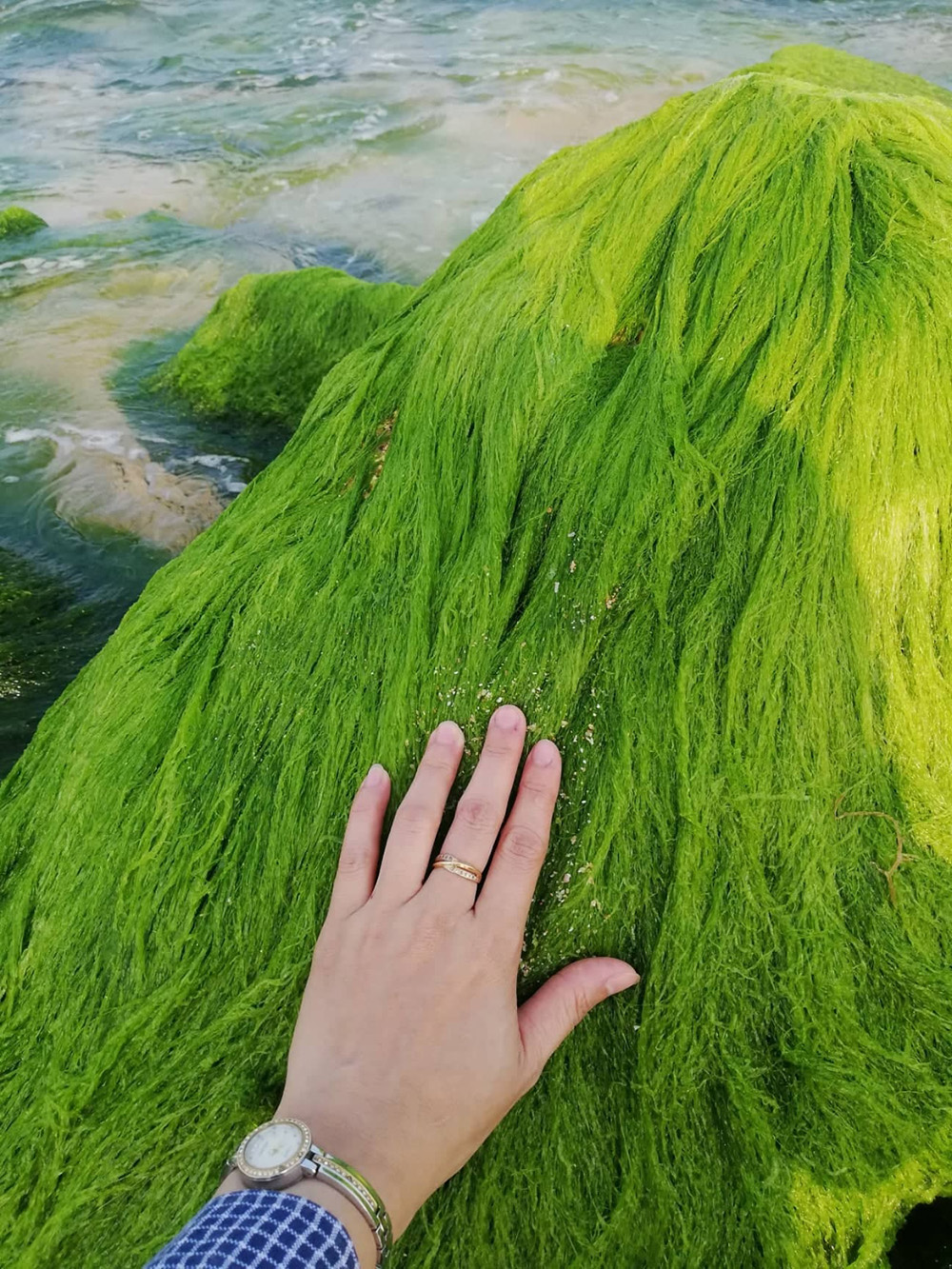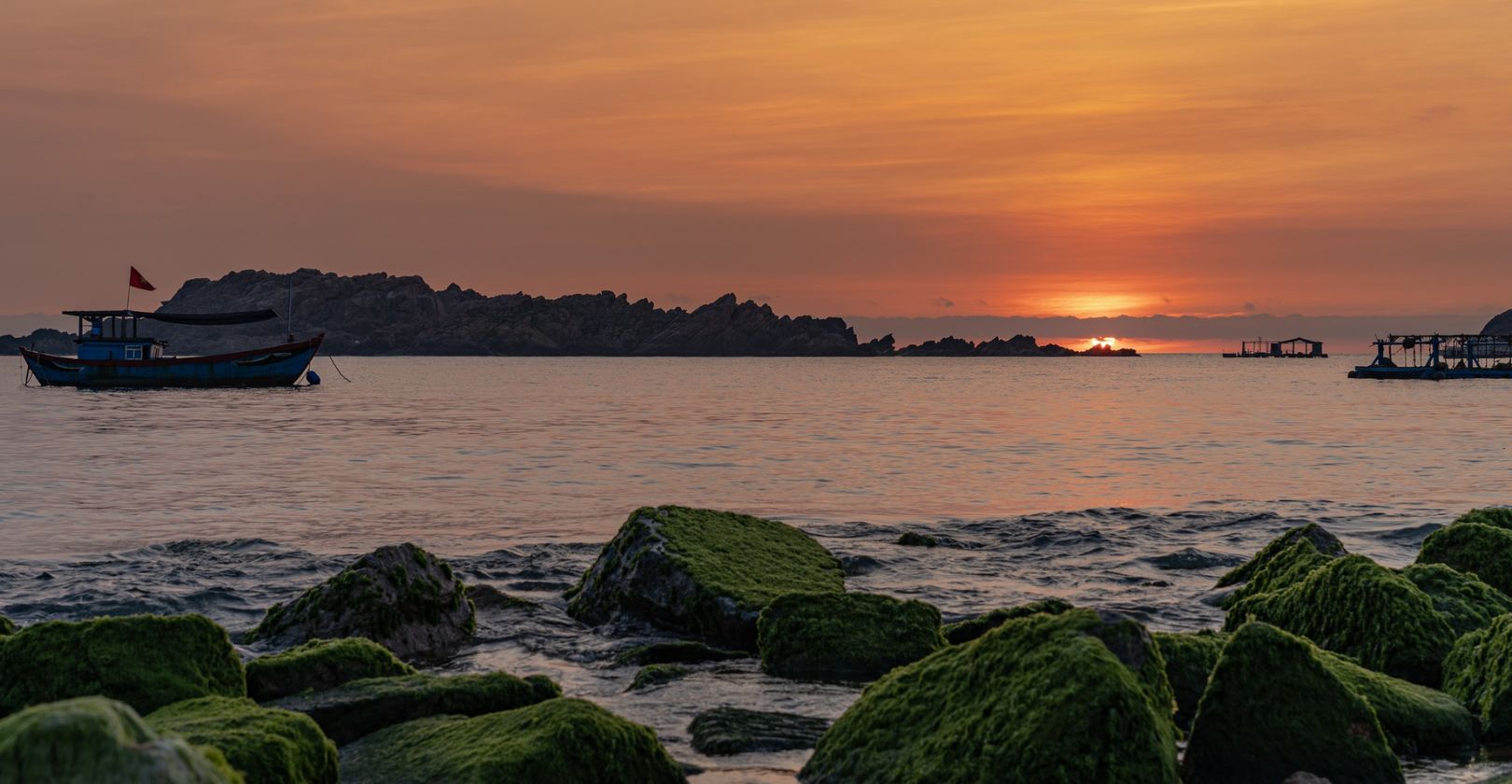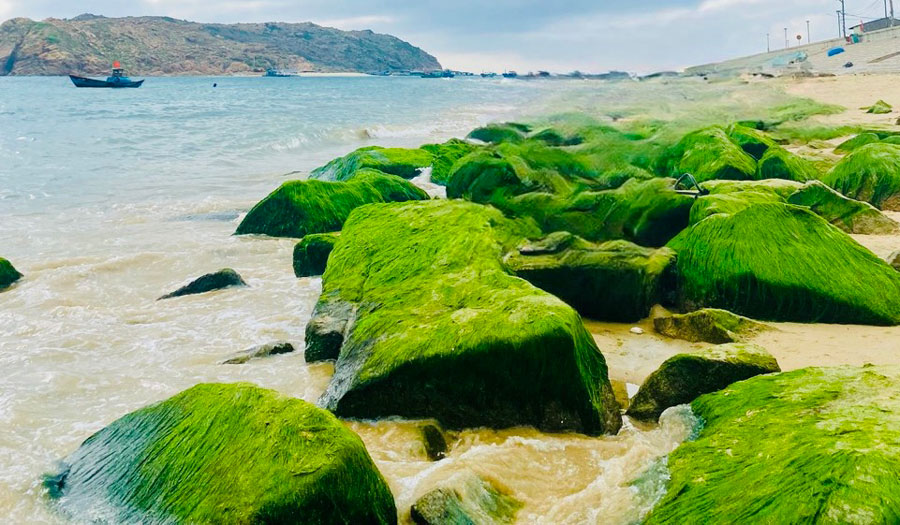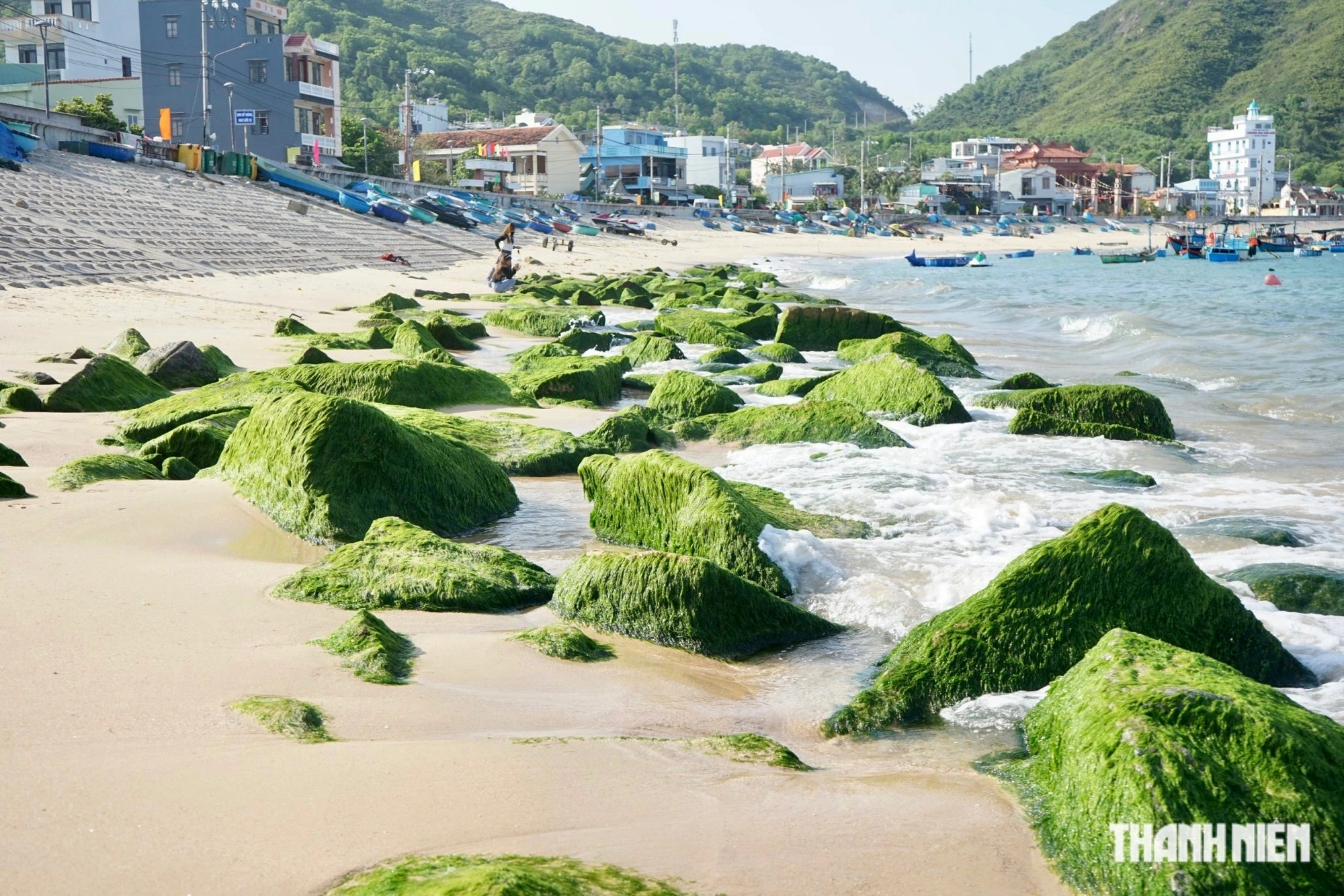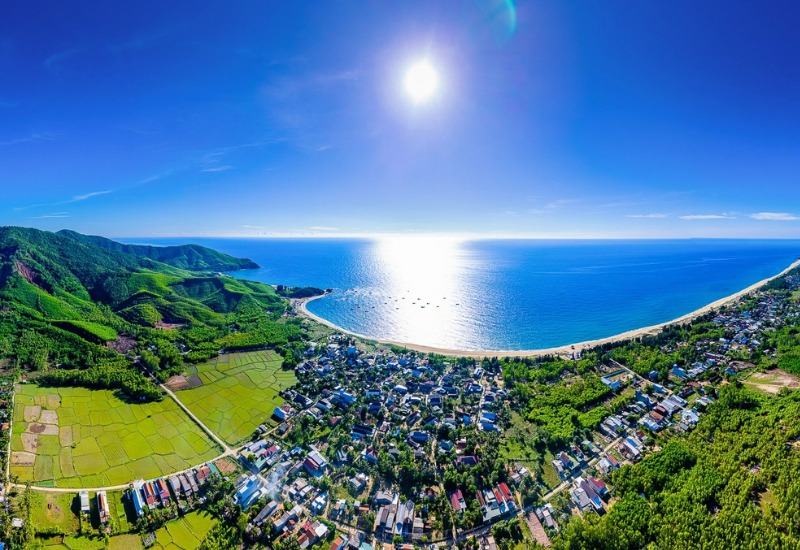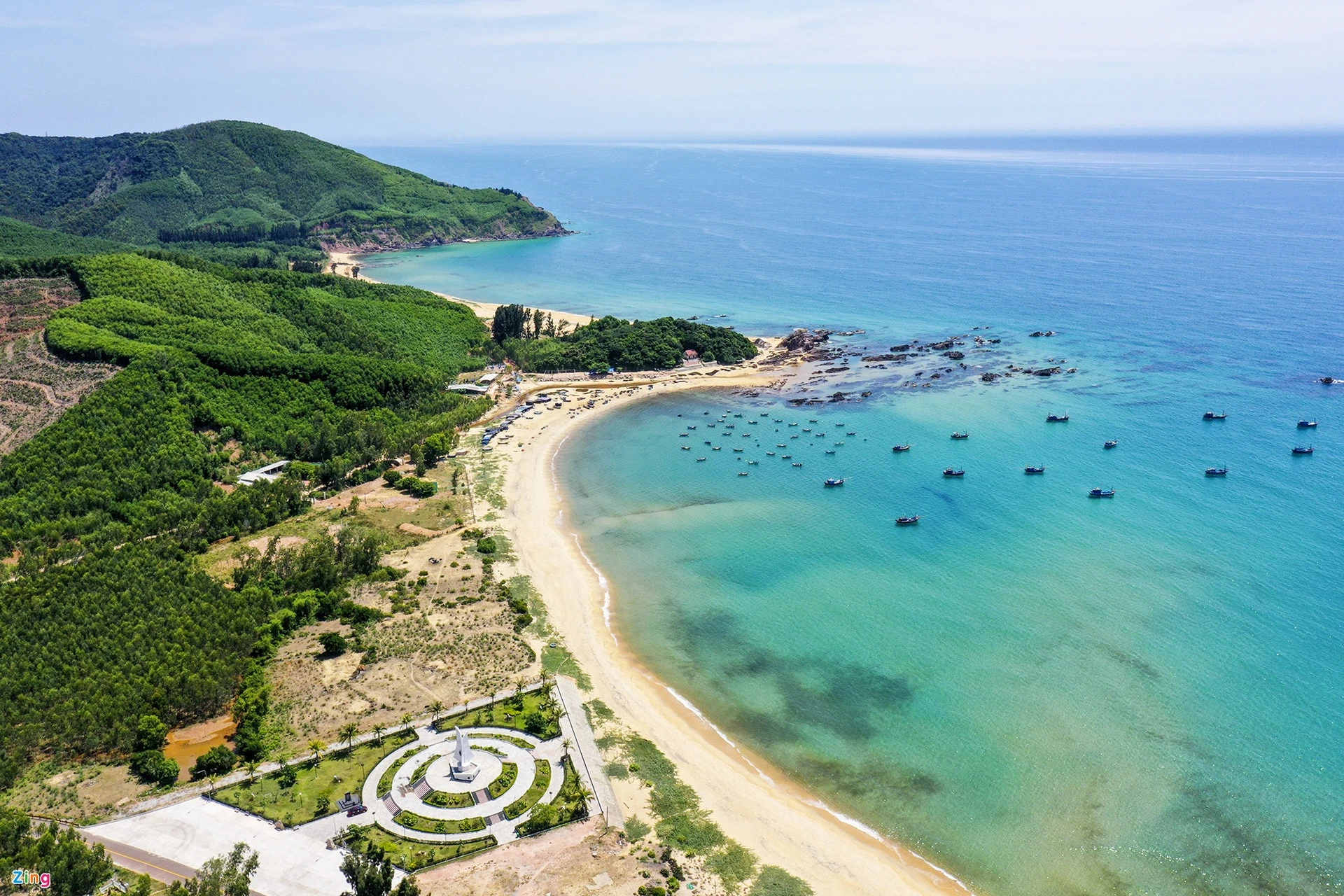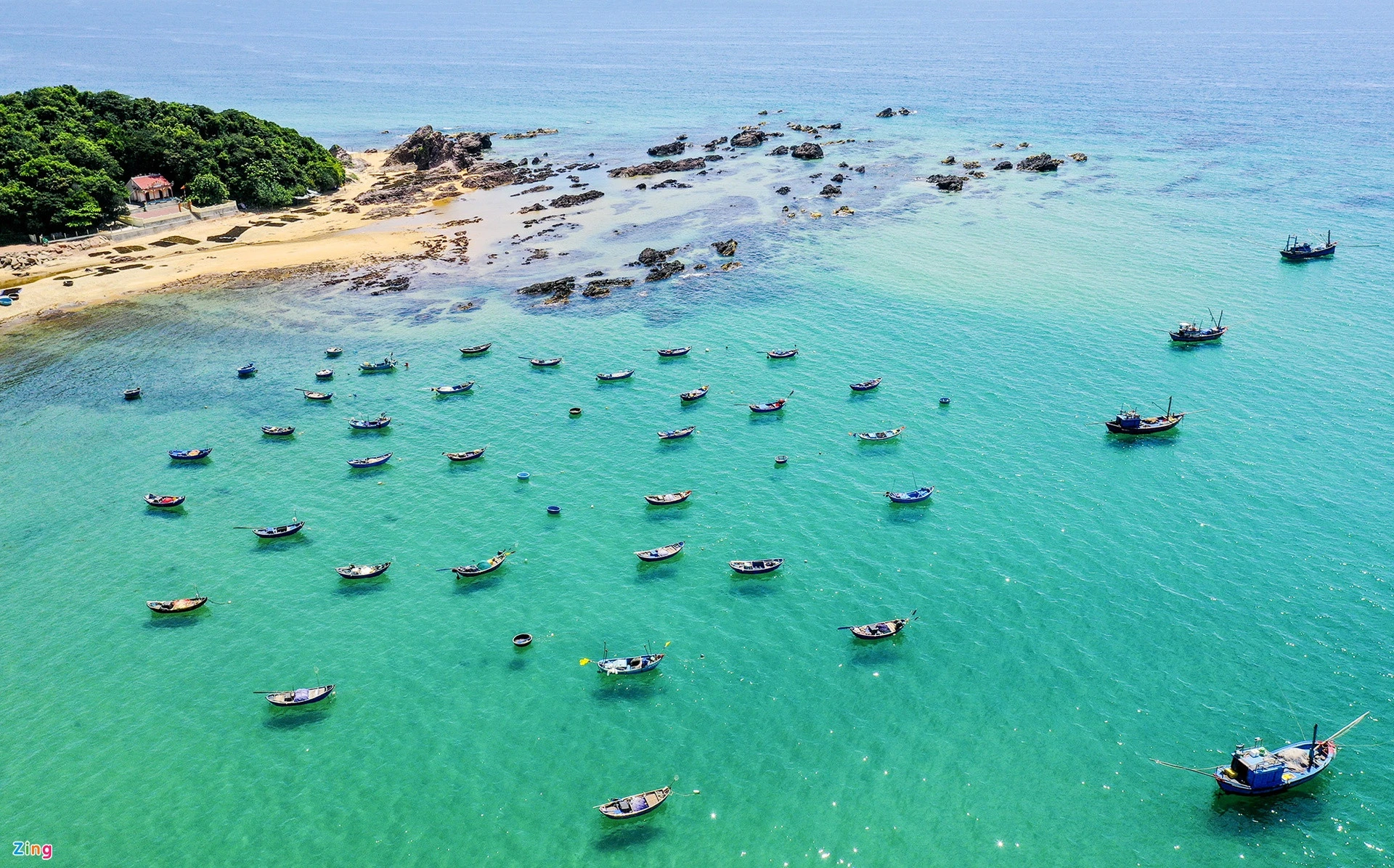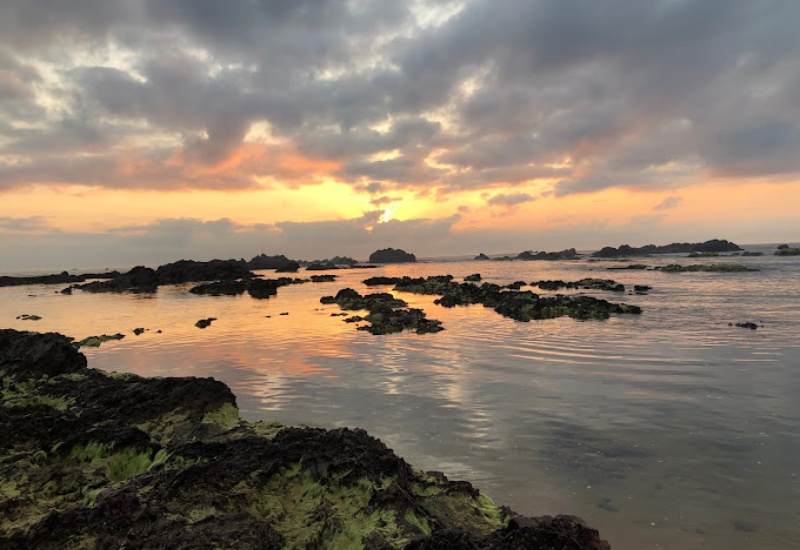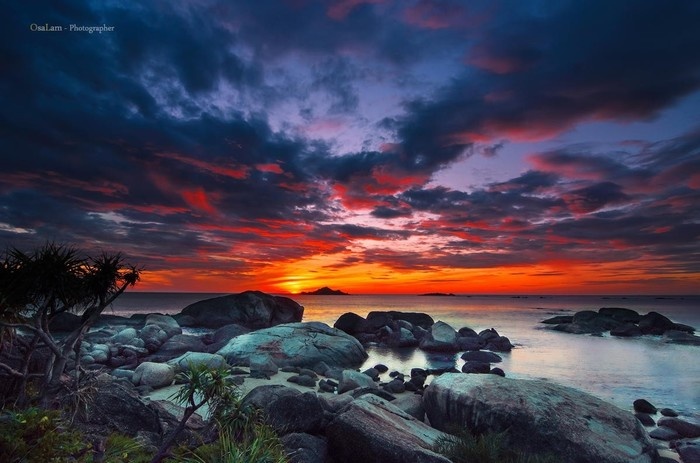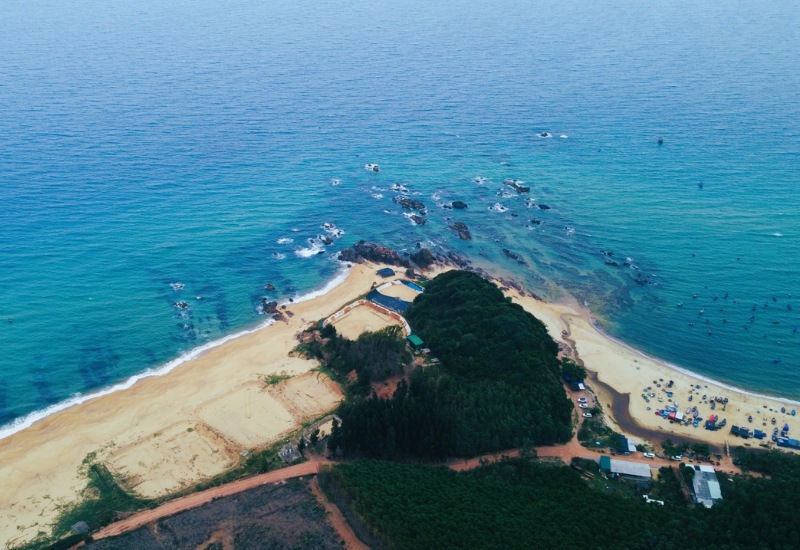Tourist destination
Na Hang tourist area
Bau Can tea hill is located in the territory of Tay Ho village, Bau Can commune, Chu Prong district, 25km south of Pleiku city. With a history of up to hundreds of years, this is one of the long -standing tea lands of the Central Highlands. Tea has appeared in Bau Can very early, according to the historical line from the 1920s - 1923 French people came and began to exploit some lands in the North Central Highlands to grow tea. In 1923 the French had established a tea and coffee company called Cateecka, this is also the landmark of the official tea tree with this plateau and developed to this day. During the French colonial period, although the North Central Highlands region has many tea plantations, Bau Can is still the most prosperous place. In 1928, there was only 680 hectares, only one year later the area had grown up to 900ha, Bau Can tea quickly was popular with Western nobles and Asian fish. At Bau Can tea hill, there is still a impression of a prosperous time with villas, hydroelectric systems or offices. In this area of Bau Can tea hill, there is a low -lying area that every rainy season comes, it will stagnate with an area of 3 hectares. But later, Bau water began to run out and Koo must be called Bau Can and thereby named this land Bau Can to this day. Coming to Bau Can tea hill, you will feel the natural beauty full of vitality and charming beauty, immense nature of nature and the sky. The road to the tea hill is a rustic dirt road, you will feel the pure tea incense as soon as you arrive. You will be fascinated by the lush green of the tea beds, the vast and immense space, sometimes in the wind is the fragrant fragrance full of pleasure. In Bau Can tea hill, it seems that the sunshine also fades away when the space here is the green color that occupies a cool and gentle. Standing in the vast space of Bau Can tea hill, all the troubles will disappear all the beauty of the existing nature and soothing emotions. The pace of this tea hill is very peaceful and immense in the tea fields looming, the farmers are working hard to work, the skillful hands that are very excited. The manual harvest has its own beauty, close and simple, seems to be so that the tea flavor is full and more charming. Traveling to Gia Lai and visiting Bau Can tea hill, you will be fascinated by the pure beauty of this land, where there is a clear blue sky with immense tea beds, the goods want to be silent in the wind, walk around the tea hill, enjoy the cool man of the highlands is the feeling that any devotees will want to experience.
Gia Lai
From November to April
2271 view
Na Hang tourist area
Ngo Son fields are also often called local people in Chu Ya commune, Chu Pah district. According to indigenous people, since they started to be born until adulthood and attachment to this country, the field existed there and became an integral part of the community's life. For the people of Gia Rai people who live for generations at the foot of Chu Dang Ya volcano, Ngo Son field is one of the important cradles, the food production place for the lives of the people, and also the place associated with the whole cultural life and the very typical agricultural rituals of the people here. This is also one of the very important agricultural production areas of Chu Pah district. Ngo Son field has an area of more than 400 hectares, spread throughout a large area of Chu Dang Ya commune and is famous for its extremely poetic and peaceful beauty. Visitors stop here to admire the scenery of a large field with sequential fields, far away from nine are extremely impressive shutter mountains. Ngo Son Gia Lai field is also considered to be Mu Cang Chai of the Central Highlands because of the wonderful scenery created from the golden fields every harvest season. The most ideal time to check-in in Gia Lai and admire Ngo Son field is from November to April next year. However, the best time is still from November to December because at this time in the Central Highlands, the weather is very beautiful, sunny, clear blue and especially Ngo Son field filled with yellow of ripe rice. This is also the season of wildflowers blooming all over the hillsides and mountains in Gia Lai. Ngo Son field in Gia Lai has a very simple beauty but no less romantic and romantic. The field stretches throughout a vast space, far away to the north is the majestic Chu Nam mountain, this is also the origin of the La Pe stream bringing cool water to the plateau to irrigate the field. Looking at the west of Ngo Son field, visitors will admire the majestic Ham Rong mountain, hidden among the mist. If you check in on this mountain, visitors can see the large corn field with square fields, followed like a beautiful natural carpet woven by the impressive colors. The excellent scenery of this field is a wonderful gift that Gia Lai for those who love the beauty of nature. In the ripe rice season, the beautiful corn field is like a colorful picture, standing out by the golden yellow of ripe rice with the green of the vast mountains, the natural color of the sky, all creating a charming beauty that is hard to look away. Perhaps because of that, coming to the appointment, each season of ripe rice is not only near and far, but also photographers also come to Ngo Son field. Check in Ngo Son field outside enjoying moments of relaxation with the peaceful beauty of the field, do not forget to record the beautiful frames between the field between the pristine plains of the Great.
Gia Lai
From November to April
2260 view
Na Hang tourist area
Located between Ia Mron commune, Ia Pa district and Ia Yeng commune, Phu Thien district. Phu Thien lotus field is larger than 12ha, located in the middle of the plateau. This lotus pond opens a large space, in the lotus season, the bright pink and pleasant fragrance of the lotus floods the air. The weather in Gia Lai and the Central Highlands region is very convenient for the development of the lotus. Therefore, Phu Thien lotus fields often have flowers all year round, but should come in the first half of the year to admire the most beautiful lotus. Although the road is far away, it is quite easy to find. You only need to follow Highway 25 to Phu Thien district, then add about 4km on Highway 25 to meet bridge 42 and turn left, go straight 10km to the committee of Ia Yeng commune, the large lotus field will not lie From then on, Dong Sen in Phu Thien at the beginning was just an unnamed swamp. After that, a retired warrior decided to plant lotus to set an example and a seed. It takes a few years, lotus plants thrive, spread throughout the lagoon. At this time, the beauty of the new lotus field was discovered, but the dress owner only rented a boatman to come here in the mirror and seed harvest season. After that, a group of young people passing the lotus pond in the lotus season stopped taking photos and sharing on social networks. Since then, Phu Thien lotus field has become famous, attracting young people in Gia Lai to visit and take photos. Initially, the owner of the lotus garden did not accept people in for fear of harming the lotus and taking care of the risk of falling down the lagoon. Therefore, at first, the youth group was often rejected. After a while, when the Department of Culture - Sports and Tourism of Gia Lai province knew about this story, they decided to come here to survey the lotus garden and discuss with the dress owner. Before the peaceful and attractive beauty here, the Department leaders decided to develop the lotus field into a big tourist destination, along with Ayun Ha and Plei Lake, Plei Rbai became the main tourist destination of Phu Thien district. Dong Sen Phu Thien has been fully equipped to serve visitors. District Party Committee supports firm boats and rowing people to take visitors to the middle of a safe photography dress. In addition, the dress owner also designed the road for the boat to move without harming the lotus. On the edge and middle of the lagoon there are small huts, selling food, drinking water, lotus products so that visitors can buy as gifts.
Gia Lai
From January to June
2462 view
Na Hang tourist area
Nui Ganh, also known as Hoai Hai rock, an emerging destination, attracts the attention of visitors when coming to Binh Dinh. It possesses pristine, majestic beauty with interesting rocky rapids, green beaches and fresh air, this is a rocky mountain range to the sea, creating a majestic and unique landscape. The towering cliffs, many interesting shapes like giant mamut elephants, sea turtles or other abstract shapes. At the foot of the cliffs are fine white sand, clear sea water, creating a beautiful picture. From the center of Quy Nhon city, you can move to Ganh by motorbike or car in the direction of National Highway 1A, through Thi Nai Bridge, turn right into the coastal road DT639. The distance is about 100km, it takes about 2 hours to move. You can visit Mui Ganh at any time of the year. However, the most beautiful time is from March to August, when the sea is smooth, sunny, convenient for visiting and taking pictures. The ideal "virtual" check-in point for those who love to take photos. It owns a diverse background with magnificent rocky rapids, green beaches and winding roads along the cliff. Enjoy interesting experiences under the clear blue water. The smooth white sand beach, clear sea water, soothing waves, very suitable for swimming. You can freely wave, immerse yourself in the cool water, dispel all stress, fatigue. . You can rent a diving tool to see the coral reefs to explore the Ocean World, admire the brilliant beauty of corals and fish species. It is also an ideal place to camp, immersed in nature. The spacious, flat beach with smooth sand is a great space for you to set up a tent, enjoy the fresh atmosphere. Pants on the fragrant BBQ party, watching the starry sky and listening to the murmuring waves. Early in the morning, welcoming the sunrise at sea with fresh, cool air will be an unforgettable experience. The ghoster not only owns a beautiful beach but also has a diverse terrain with cliffs and caves. Coming here, do not miss the experience of trekking along the beach, discover the "secrets" hidden in this "wonderful love". Attract for those who want to experience whales. Around July to July every year, whales often migrated to this sea to earn food, creating an amazing natural scene.In the nose, in addition to admiring the beautiful scenery, do not forget to experience the cuisine. With fresh and delicious seafood dishes.
Gia Lai
From March to August
2684 view
Na Hang tourist area
Dong Xanh Park in the eyes of tourists is considered a miniature Central Highlands, a tourist destination. Dong Xanh Park is located in village 5, An Phu commune, Pleiku city, Gia Lai province. This place is considered a place to rest, convalesce and explore the cultural identity of the Northern Central Highlands, invested and built by Gia Lai Culture - Tourism Joint Stock Company. With an area of about 8 hectares, Dong Xanh Park stretches across the An Phu rice fields and in the villages of the Gia Rai and Ba Na ethnic people... That's why the architecture of stilt houses, long houses, and houses is unique. Dragons, tombs, T'rung water musical instruments and statues are created to simulate and recreate the daily life and production of ethnic minorities. One Pillar Pagoda was built in Dong Xanh park following the prototype of "Tay Thien Nhat Tru" in Hanoi in both proportion and architecture. Therefore, when visiting here, this image will help travelers remember one of the sacred and proud architectural works of the Vietnamese people. Dotted around are the statue of Avalokiteśvara Buddha to save suffering, the God of Wealth Tower, the Three Entrance Gate and two stone elephants symbolizing the art of hunting and taming wild elephants of the indigenous people of the Central Highlands and on the four sides are Precious plants are arranged harmoniously and beautifully. Here, there is also a water park with the first wave pool in the Central Highlands, a mini zoo with many birds and precious animals such as Ostrich, Deer, Leopard, Bear, Crocodile... and a motel system with bungalows. Serving guests who want to relax… In addition to designs imbued with cultural identity when traveling to the Central Highlands, this stop is also invested in building spiritual cultural works towards the roots and towards the ancestral land to commemorate their gratitude. King Hung was instrumental in building the country. Specifically, visitors will feel peaceful and free when respectfully worshiping in front of the Hung Vuong National Temple. This temple is the largest in scale in the Central and Central Highlands, built with traditional architecture including an 18m high stylized communal roof. In the palace is the majestic statue of the National Patriarch Hung Vuong, carved from wood, 6m high, weighing nearly 3 tons, lacquered and gilded. And in front of the palace are majestic statues of 18 Hung Kings, creating a majestic but also solemn space. At Dong Xanh park, the appearance of petrified wood has attracted a lot of attention from tourists. It is known that this fossil wood is the oldest in Vietnam, dating back hundreds of millions of years, with a diameter of more than 1 meter and a length of tens of meters. The fossilized wood trunk is as large as a linga placed next to the communal roof, a symbol of Central Highlands culture. This wood was found in the crater of Chu A Thai commune, Ajun Pa district, Gia Lai province. According to previous people, the ancient forests in Gia Lai were buried under volcanic lava flows for millions of years, creating beautiful fossilized wood. And scientists have also proven that the Central and Central Highlands regions, especially Gia Lai province, have dozens of volcanoes. Along with geological changes over millions of years, fossil wood is created from the decomposition of organic matter in the wood that has taken place over that long period of time. People in the Central Highlands believe that petrified wood is a wonderful form of jewelry, with a quartz-like texture so it is very hard and can be used as fine arts. With large pieces, petrified wood can be sawed to make tables and chairs because it is not rotten or damaged by rain, wind or weather. Not only that, petrified wood also brings luck, peace, health and longevity to the owner. Characteristic symbols for the village culture are images of communal houses, long houses, stilt houses, tomb houses, tomb house statues, T'rung water musical instruments, and Central Highlands landscape monuments. Especially the statues of the Water King (Po Tau La) and the Fire King (Po Tau Pui) - two important symbols in the natural beliefs of the Central Highlands peoples. Along with that is the statue of Djong looking for the Sun goddess. All have created a vivid but extremely realistic nuance about the daily life and production of ethnic people. In addition, the image of the largest bronze gong in Vietnam with a diameter of 2.5m and a weight of 700kg will certainly make tourists excited. This is a work made by artisans of Phuoc Kieu bronze casting village, opening up a space of gong culture in the Central Highlands. Continuing inside, looking around, visitors will see a system of bungalows built next to an aquarium, a flower garden, a water park, a wave pool, and a lotus pond with rockeries. with a garden full of animals: ostriches, deer, leopards, bears, crocodiles... Mixing with the fresh, airy atmosphere in Dong Xanh park when traveling to the Central Highlands, you can also explore and participate in Participate in attractive entertainment activities such as: traveling boating, duck riding, fishing... Or visitors can also visit the culinary service area - traditional ethnic specialty restaurant with their family and friends to enjoy the famous dishes here. such as: bamboo tube rice, can wine, ghe wine, grilled wild meat...
Gia Lai
From November to April
3070 view
Na Hang tourist area
Dak To Pe terraced fields are a beautiful natural picture of the mountainous region of Dak Doa district, Gia Lai. This place carries with it the majesty and wilderness of vast, vast fields. So on your trip to Gia Lai, don't miss this attractive destination. Dak To Pe terraced fields are located in Trang commune, Dak Doa district, Gia Lai. The entire field has an area of about 50 hectares and is the wet rice cultivation area of the people of Kol and Ghe villages. Each year, people will cultivate two rice crops, in addition to alternating corn crops. According to the people of Trang commune, Dak To Pe terraced fields were formed about 45 years ago. After liberation, soldiers and officials came here to instruct villagers how to cultivate wet rice to have enough food to serve their lives. However, because this area is full of mountainous terrain, it is difficult to retain water, and the soil is easily eroded and infertile, so people have built banks to form terraced fields for easy cultivation. Up to now, Dak To Pe terraced fields include hundreds of fields of different sizes, located along two gentle mountain slopes, creating a breathtaking beauty, especially in the ripe rice season. Dak To Pe terraced fields possess a very simple and rustic beauty. This place is not as majestic as the terraced fields of Sapa or Mu Cang Chai due to the gentle terrain, the altitude is only about 500m above sea level. The fields here are also divided into quite small plots, with many different shapes, rather than running long like in the Northwest region. The most beautiful time of Dak To Pe Terraced Fields is during the ripe rice season. At this time, the fields will be dyed a rich and brilliant yellow color, shining under the rays of the sun. In particular, Gia Lai people cultivate two crops per year according to the weather, so when the rice is ripe, it will ripen simultaneously, creating a brilliant beauty and stretching over 50 hectares, extremely beautiful. The people here are very enthusiastic and friendly with groups of tourists who come to visit and travel. You can comfortably climb along small trails, watch people harvest rice, and chat with them to better understand the lives of the people here. However, because the terrain of Dak To Pe Terraced Fields is only slightly sloping, it will not look beautiful when photographed. Therefore, if you want to take impressive images, you must climb to the top of the mountain or take photos with a flycam to see the vastness and majesty. Located at the end of the Dak To Pe terraced fields will be the wild and beautiful Doi waterfall. The waterfall consists of two parallel streams, following the cliff and pouring down. The water source of Double Waterfall is formed from Dak Oi and A Dit streams. The stream flows through the Dak To Pe terraced fields, reaching the cliff, forming two parallel waterfalls, 20m apart. Water from the waterfall pours down into the middle of the abyss about 150m deep, creating a scene as soft as a girl's silky hair falling down. Although not as majestic as Kty Waterfall or Kleng Waterfall, Double Waterfall still has a very unique beauty. However, the amount of water at Double Falls is not too abundant. During the dry season, Dak Oi and A Dit streams will dry up, causing Twin Falls to lack water. Currently, only the waterfall on the left from Dak Oi stream is still flowing steadily, while the waterfall on the right has almost dried up, with only traces of the flow still imprinted on the cliff.
Gia Lai
From November to April
2845 view
Na Hang tourist area
Gia Lai is already very famous for many of our country's most pristine and natural tourist destinations. Besides famous attractions such as Kon Ka Kinh National Park, Van village's ancient stone stream is a typical example of the newly discovered beauty in this land. Van village's stone stream is a rocky rapid of millions. five years old with a gurgling stream separating the stone pillars into two banks, in Ialy town, Chu Pah district, Gia Lai province and about 45km from Pleiku city. Unlike Bau Can Waterfall, the stone pillars in this stone stream are hexagonal shaped stacked on top of each other. They stretch for about 1km on both sides of the murmuring stream, creating a unique, one-of-a-kind natural landscape. The ancient stone stream of Van village has a simple, rustic landscape, surrounded by vast forests and mountains. Next to the path is a gurgling stream. There's nothing better than relaxing here with close people, or simply finding a little peace amid the chaos of life. The smell of the plants and the fresh feeling of the stream are guaranteed to take you away from the noisy and bustling city to the peaceful nature. The hexagonal stone pillars are stacked and close together to form a unique honeycomb shape that is impossible to take your eyes off of. In between the two banks, there is a gurgling stream flowing through the rocks, bringing a feeling of peace and relaxation. All your senses are soothed by the unique beauty of Van Village's Ancient Stone Stream, relaxing in the embrace of nature. Besides the tourist attractions of the Central Highlands such as Plei Op Cultural and Tourism Village, Van village's ancient stone stream with its unique and new beauty will be a great choice for your photo shoots. Bright colors and scenes that seem simple and rustic but are extremely eye-catching will be the factors that help make your photos different. What's better than being able to save memories with your family, friends, and loved ones in interesting locations, right? The ancient stone spring of Van village is not only a source of water for the people in Van village but also a place to bathe and play for children here every festival season. The ancient stone stream has been associated with human life here from generation to generation. Some people also believe that the sound of the stream flowing through the rapids is the voice of Yang, the god. Because only gods can create such strange stone pillars. More and more, the ancient Stone Stream of Van village is becoming more and more known, and the people here love and are more proud of the beauty of their homeland.
Gia Lai
From November to April
3214 view
Na Hang tourist area
Mang Yang ancient rock rapids is also known by another name as ancient rock field in Don Hyang village. This rapid is located downstream of H'Chan Hydroelectric Power Plant, in Don Hyang village, De Ar commune, Mang Yang district, Gia Lai. The rocky rapids were discovered during the exploitation and construction of the hydroelectric plant. In just a short time, the images taken here have become extremely hot in Gia Lai review groups. Many young people flock here to admire this unique terrain as well as check-in with the super impressive background. In Gia Lai, there are currently three famous ancient stone fields: Mang Yang ancient stone rapids, Van village's ancient stone stream and the hexagonal stone paradise in Kong Yang village. All three of these rocks are of great significance in geological research, helping scientists learn many new things about the formation process of the Gia Lai region in particular and the Central Highlands in general. Along with that, based on professional documents and assessments of geologists, Mang Yang ancient rock rapids have a structural form and age similar to Ganh Da Dia of Phu Yen province. The ancient rock rapids at Mang Yang are made up of relatively regular hexagonal stone blocks and bars, quite similar in shape, arranged alternately in perpendicular directions. The structure here easily reminds us of a giant honeycomb, with many unique rough spots. The stone has a stained color as if it had just gone through a big fire, the color is uneven, some dark and light places are very special. If the rocky stream section in Van village was hidden under ancient foliage for a long time, Mang Yang ancient rocky rapids were influenced by the flow of the Ayun River. This river flows very fast, especially in the rainy season, the amount of water and its force can be very erosive. Hundreds of stone bars, over the centuries, have been continuously eroded by currents, combined with geological changes and weathering processes, creating the unique landscape today. According to research from scientists, this ancient rock field originated from volcanic magma eruption. Originally, igneous rock has tremendous hardness, so the force of the flow has smoothed the outside surface, making the rock blocks look like they are stuck together, forming large pieces with a hexagonal structure like a honeycomb. In many locations, ancient rock blocks also form large depressions, even penetrated by water, forming holes up to a meter in diameter. Since then, the terrain has had many more niches and caves of all kinds with different shapes and sizes. Currently, we still do not know how many ancient stone blocks there are below the dam or underground. However, according to the assessment and inference of geologists, the current exposed part of Mang Yang ancient rock rapids is probably only a part of the rock field. Over time, terrain changes can help us discover more interesting things still buried underground.
Gia Lai
From November to April
3004 view
Na Hang tourist area
It can be said that Nhon Hai beach is more favored by nature than other sea areas of Binh Dinh. The beauty of coastal fishing villages is shown more clearly with the boats, boats or fishing gear of fishermen. Nhon Hai also appears magical and overwhelming during the only green moss season each year. This is also the starting season for tourism in this coastal fishing village until the end of the dry season. In Nhon Hai's green moss season, the rugged rocks are covered with a "green carpet" of moss growing together. This type of moss is green, clings tightly to the rocks, and sways gently along the sea surface. When the tide recedes, clumps of moss bask on the cliffs, with the gentle sunrise creeping through each rock. The beauty has the wildness of nature but is strangely magical, making visitors ecstatic. At the present time, Quy Nhon is entering its most beautiful season and so is Hon Kho's green moss season. In early February, Quy Nhon's weather begins to gradually warm up, the sky is clear and the wind blows cool. Sunrise or sunset glows red across Quy Nhon's skyline, which is also the time when you can fully admire the beauty of Nhon Hai's green moss season. Every year at the end of February and early March, Nhon Hai beach will be covered. a deep green color of moss. This is when the moss carpets awaken after a series of cold hibernation days. The rocky beaches along the sea seem to be wearing "new clothes", soft, flexible and full of poetry. At dawn or sunset, the blue rock beach gradually appears following the low tide. So when can we fully admire the majestic "beauty" bestowed by mother nature here? To answer this question, you should start early in the morning or when the sun is about to set. That's when the tide receded, moss banks hidden deep in the sea water appeared. There's nothing better than watching the sunrise gradually appear on the sea surface, combined with the green color of moss. If you are a night owl who cannot wake up early, checking in in the afternoon is also reasonable! If you're lucky, you'll catch a red-pink sunset that's equally eye-catching. To experience "hunting" on a green moss rock beach with a perfect score of 10, you first need to prepare a few things. First, and most importantly, you need a friend who knows how to take pictures, not a penny. Next are really cool outfits and pretty makeup tones for the pictures. Finally, a big stomach to eat all the delicious and cheap dishes in Nhon Hai fishing village. If you travel by motorbike, don't forget to fill up the tank with gas, then experience the beauty of this coastal fishing village! Quy Nhon's weather seems to be earnestly inviting tourists to visit and experience. The place is famous for its blue beaches, rows of whispering waves on smooth white sand. The green moss season has also begun, a season as beautiful as a painting that makes many people fall in love. Is that enough to make you feel excited for this journey? Coming to Nhon Hai to see moss, you also have the opportunity to experience and explore the peaceful fishing village life and enjoy the rustic cuisine of fishermen. local; Follow the fishermen in baskets to fish for squid on floating rafts on Hon Kho island, discover the beauty of the rocks and the ancient citadel in the middle of the sea that only rises above the water when the tide is low...
Gia Lai
From January to March
3433 view
Na Hang tourist area
Lo Dieu beach is located in Hoai My commune, Hoai Nhon district, Binh Dinh, about 88km from Quy Nhon. This place stands out with its pristine golden sand beach running around the cliffs and the available natural products that give this place a unique appeal. Viewed from above, the entire Lo Dieu beach looks like a crescent moon, with villages leaning against the mountainside, green rice fields and the vast sea. The scene is like a beautiful, peaceful landscape painting. Looking down from above, Lo Dieu beach looks like a giant bow, its back leans against the mountain, its face faces the sea, and in the middle is a field. With 3 sides facing the mountain, 1 side facing the sea, Lo Dieu is not just a beach. a beautiful natural picture but also a historical red address. During the years of resistance against the US, this place became a lifeline, nourishing the revolutionary spirit of the entire South. Hundreds of martyrs have heroically sacrificed their lives in this land, contributing to creating brilliant golden pages of history. Today, when you come to Lo Dieu, you will be immersed in the peaceful space of the beach, admiring the magnificent rocks created by nature. Each stone, each wave seems to tell a story about the heroic history of the nation. Lo Dieu Beach - a place of harmony between natural beauty and historical value, will certainly leave unforgettable impressions in the hearts of visitors. Seen from afar, with its wild and beautiful scenery, Lo Dieu Beach still remains. keep intact. The natural process of formation and erosion has transformed the rocks here into many interesting and extremely strange shapes. Lo Dieu Beach, in addition to possessing wild and majestic beauty, is also a suitable place for swimming, taking wedding photos, eating seafood... Swimming at Lo Dieu is an unforgettable experience. You can immerse yourself in the cool, clear blue water, build fun sand castles or simply lie down and relax, enjoying the warm sunlight. The feeling of being immersed in pristine nature, listening to the murmuring waves will help you dispel all fatigue and anxiety. The sunset moment on Lo Dieu beach is a beautiful picture given by nature. The Sun slowly dropped into the sea, dyeing the entire sky red. The last rays of sunlight shine down on the undulating rapids, creating a shimmering, magical scene. Each rock is like a natural sculpture, with soft curving lines and diverse colors, from bright orange-red to quiet brown and mysterious black. When you have the opportunity to travel to Binh Dinh, you can join the people rowing nets to catch fish. Not only can you watch, you can also directly experience the life of Lo Dieu fishermen. Row a boat with them, feel every wave, pull the net together, and enjoy the joy of catching fresh fish. Then, join the locals at the seafood market, choose the freshest shrimp, crabs, and squid and prepare your own dishes rich in sea flavor. The feeling of being able to prepare the dishes you just caught with your own hands will definitely be an unforgettable experience. At Lo Dieu beach, there are also many different places for you to take check-in photos and preserve memories. Outstanding with a clear blue beach, uniquely shaped rocks, rocks with impressive green moss... all will give you the most impressive photo. The best time to take photos is probably early in the morning when there is sunrise and in the afternoon when there is sunset. When the Sun begins to sink into the sea, the entire sea area spreads out like a jade green carpet, dotted with white waves and white foam. Small boats sway like sleeping birds on the water. Touching our feet on the soft sand dunes, gliding lightly on each smooth grain of sand, we seem to be lost in a peaceful world. Twilight in the darkness, the rocks seemed to run, as if playing on the waves. Each wind whistled against the rocks as if lamenting, as if sulking. The protruding part of the reef is a lonely mountain. During the day, children can comfortably climb up to catch birds and cast fishing rods. When the Sun slowly rises from the sea, the rocks covered with green seaweed shimmer in the morning sunlight. The color of the sea blends with the green of the seaweed to create a wonderful dawn picture. With a long stretch of golden sand, amazing rocky rapids and clear blue water, Lo Dieu promises to bring you and your family wonderful experiences. unforgettable memories.
Gia Lai
From November to April
3398 view

